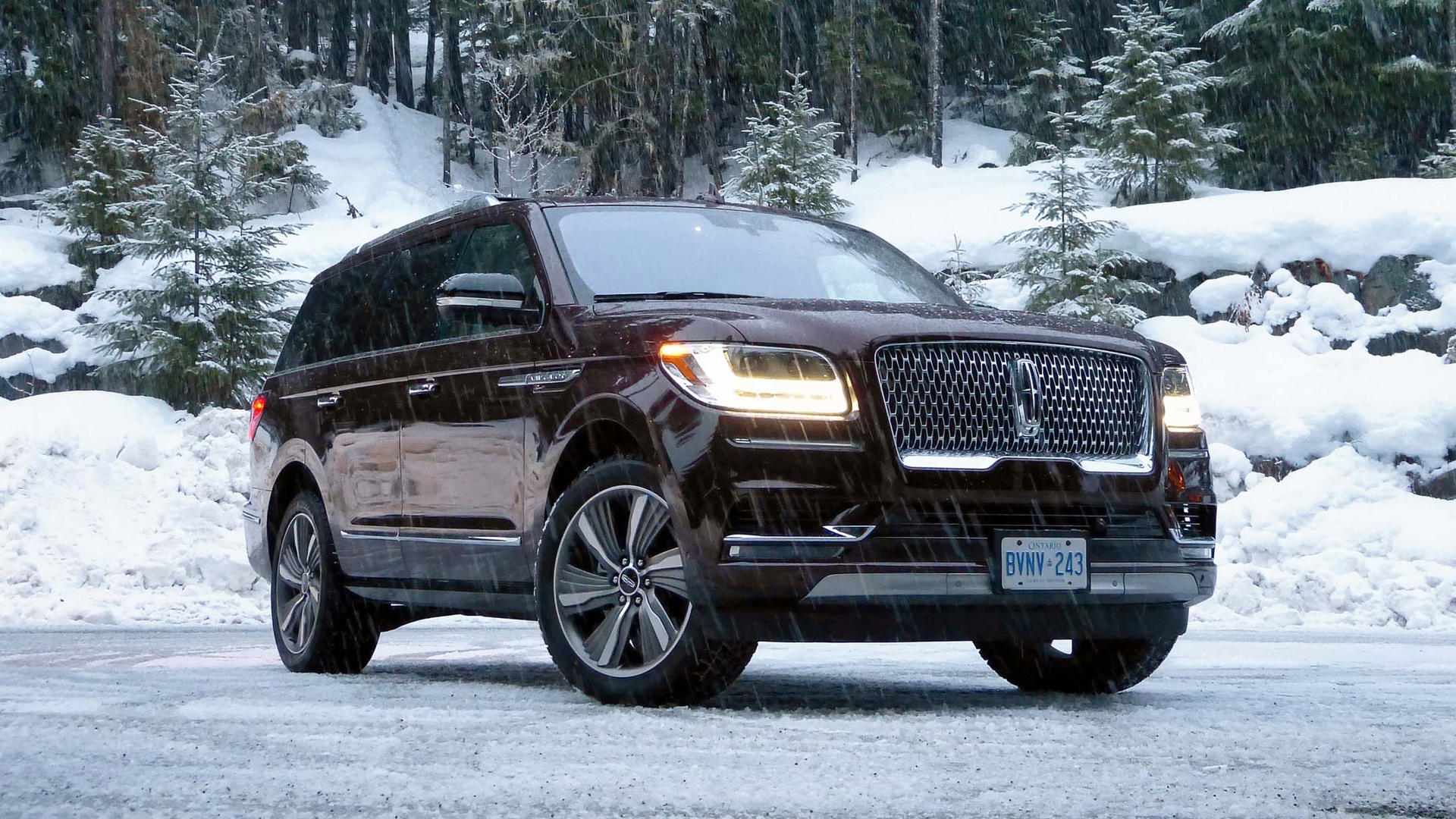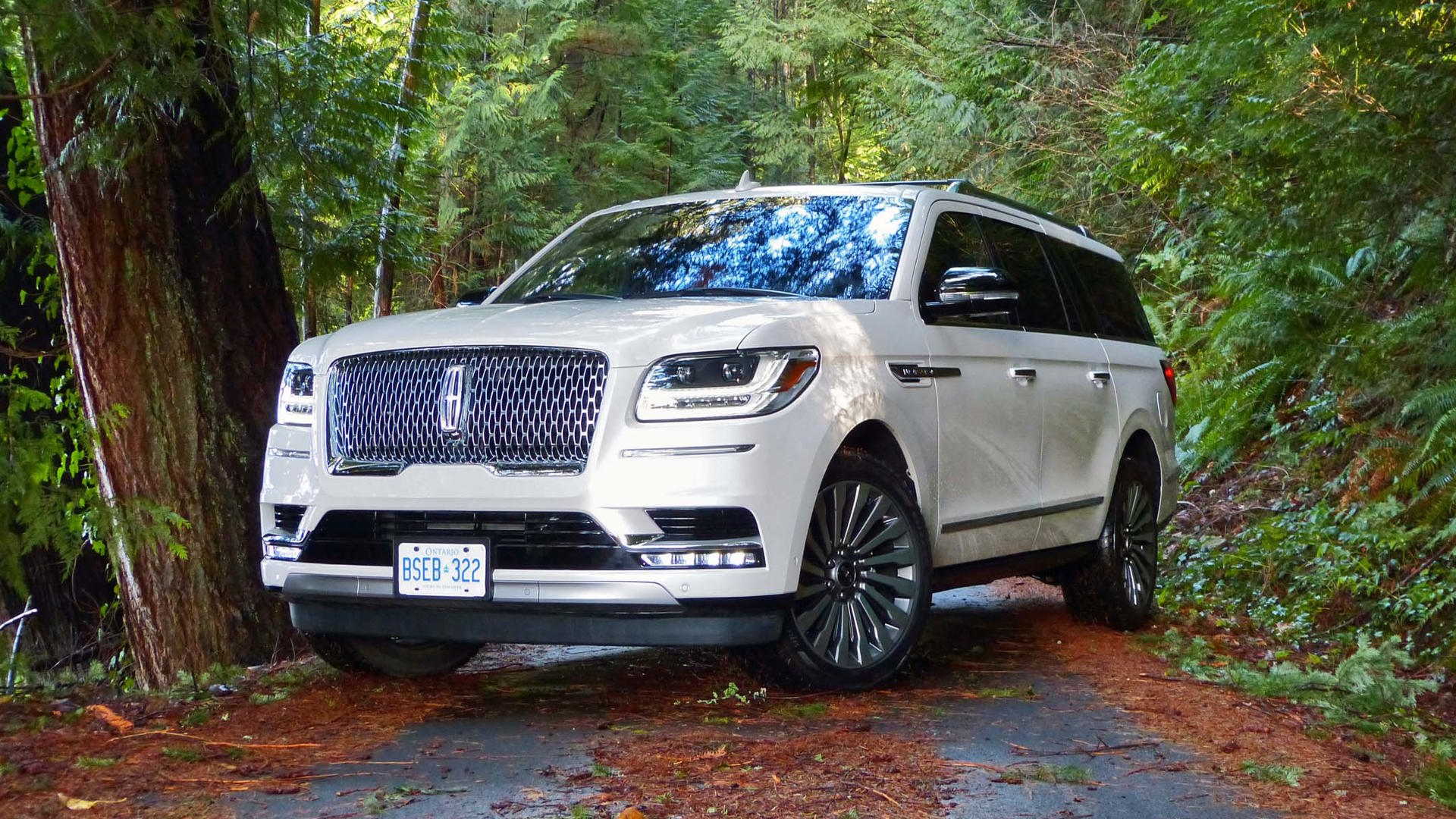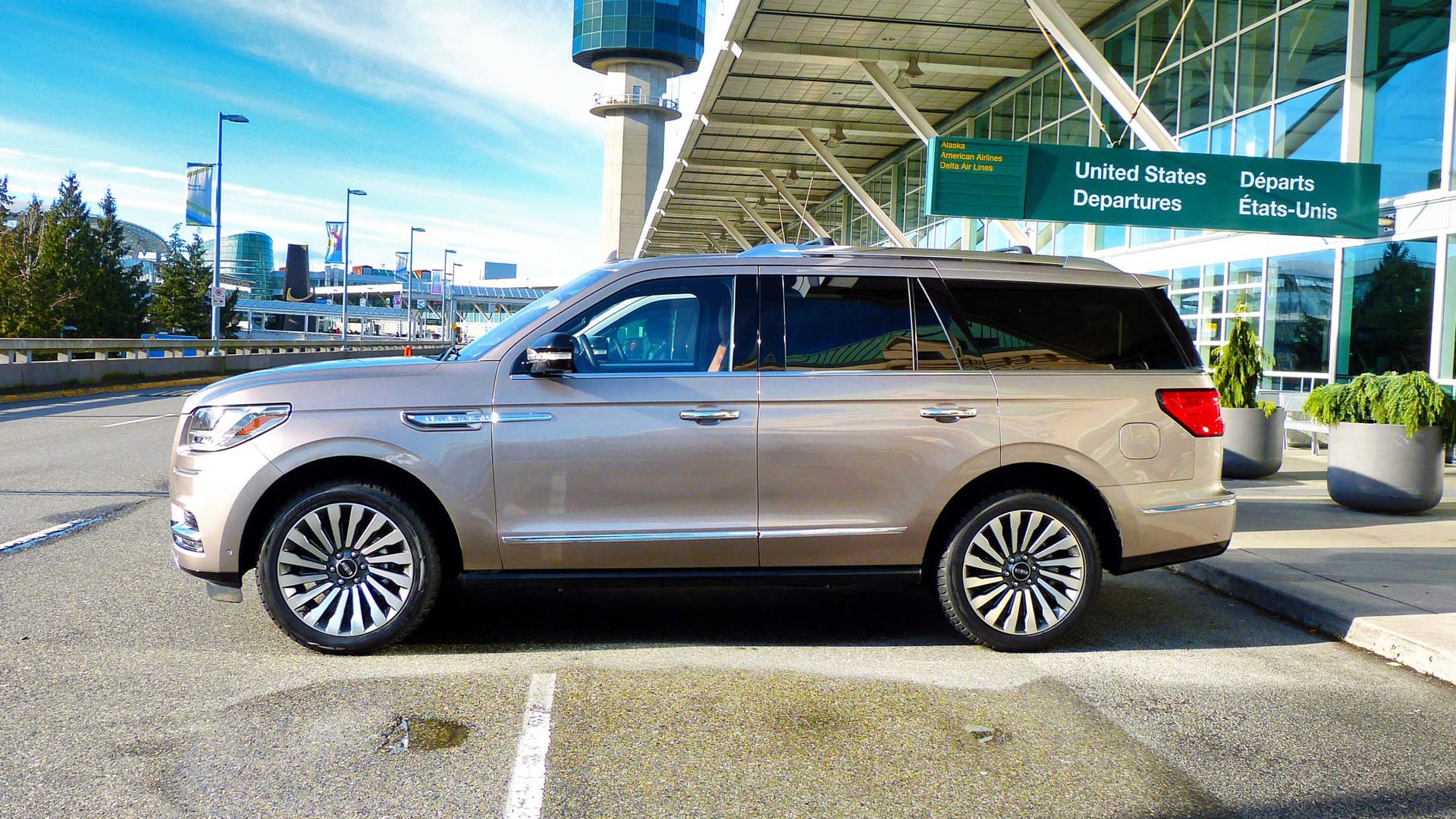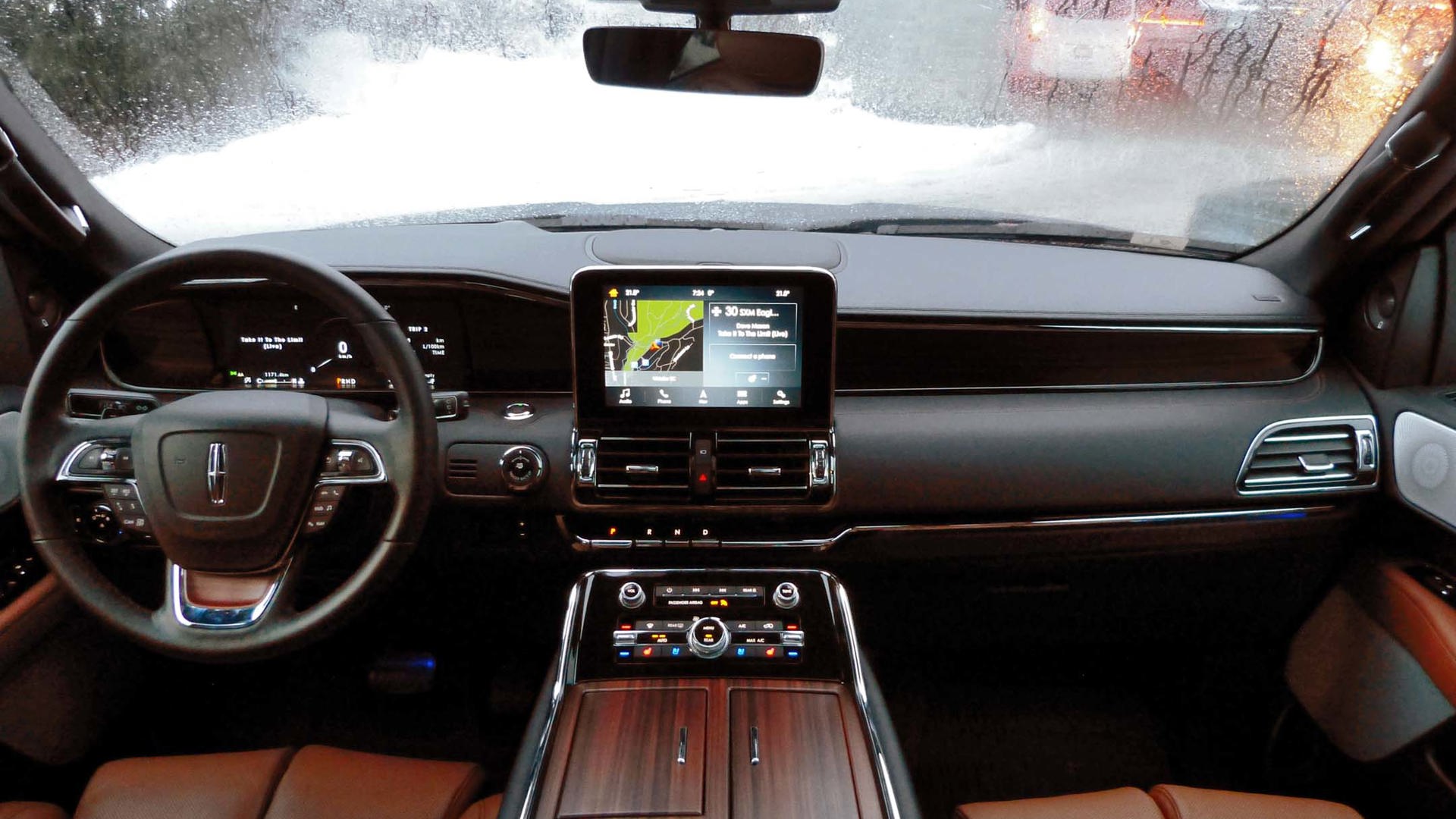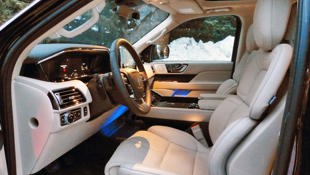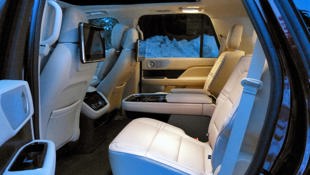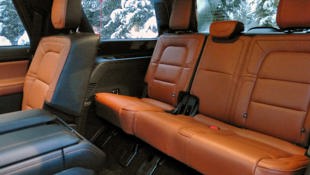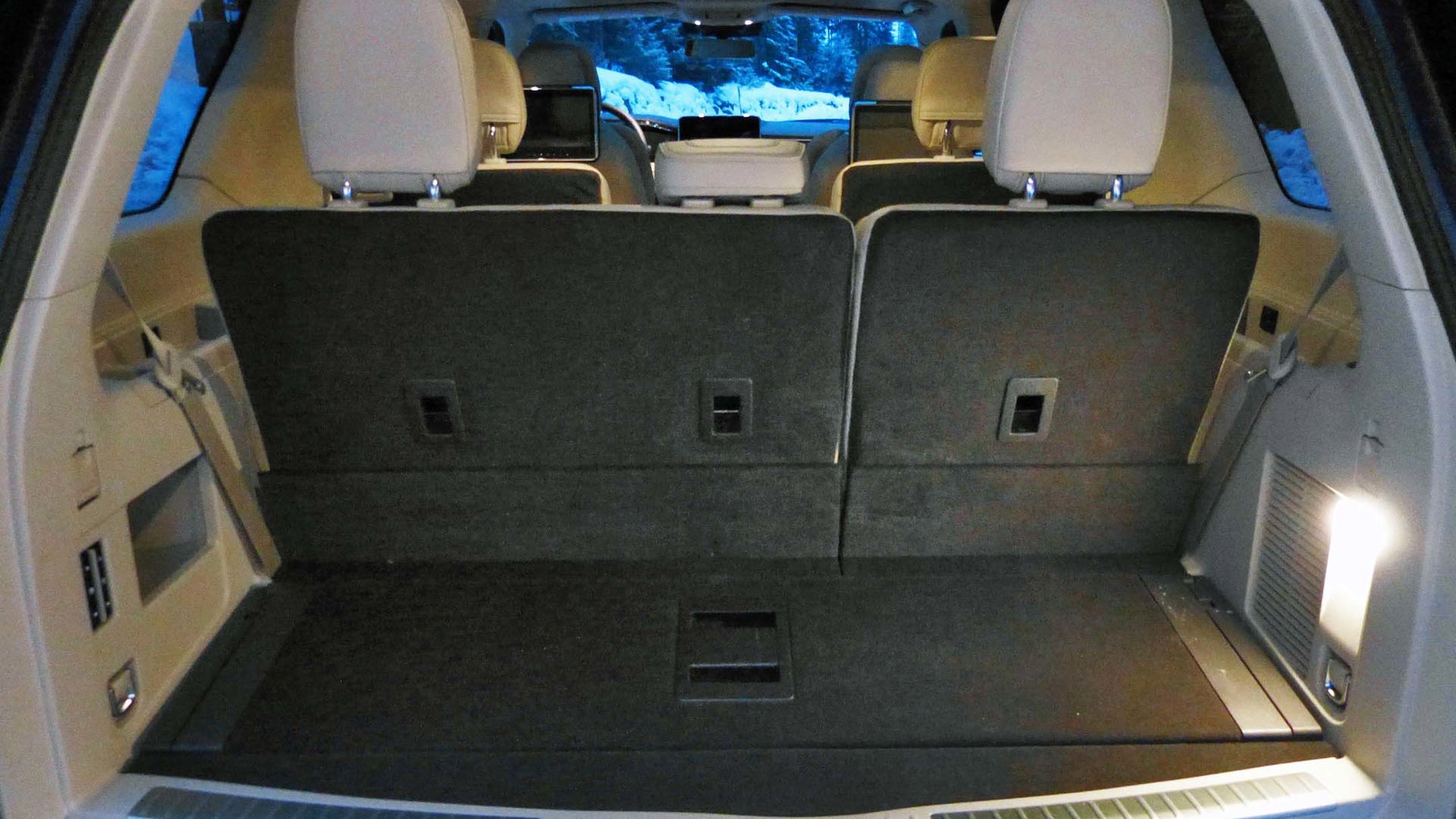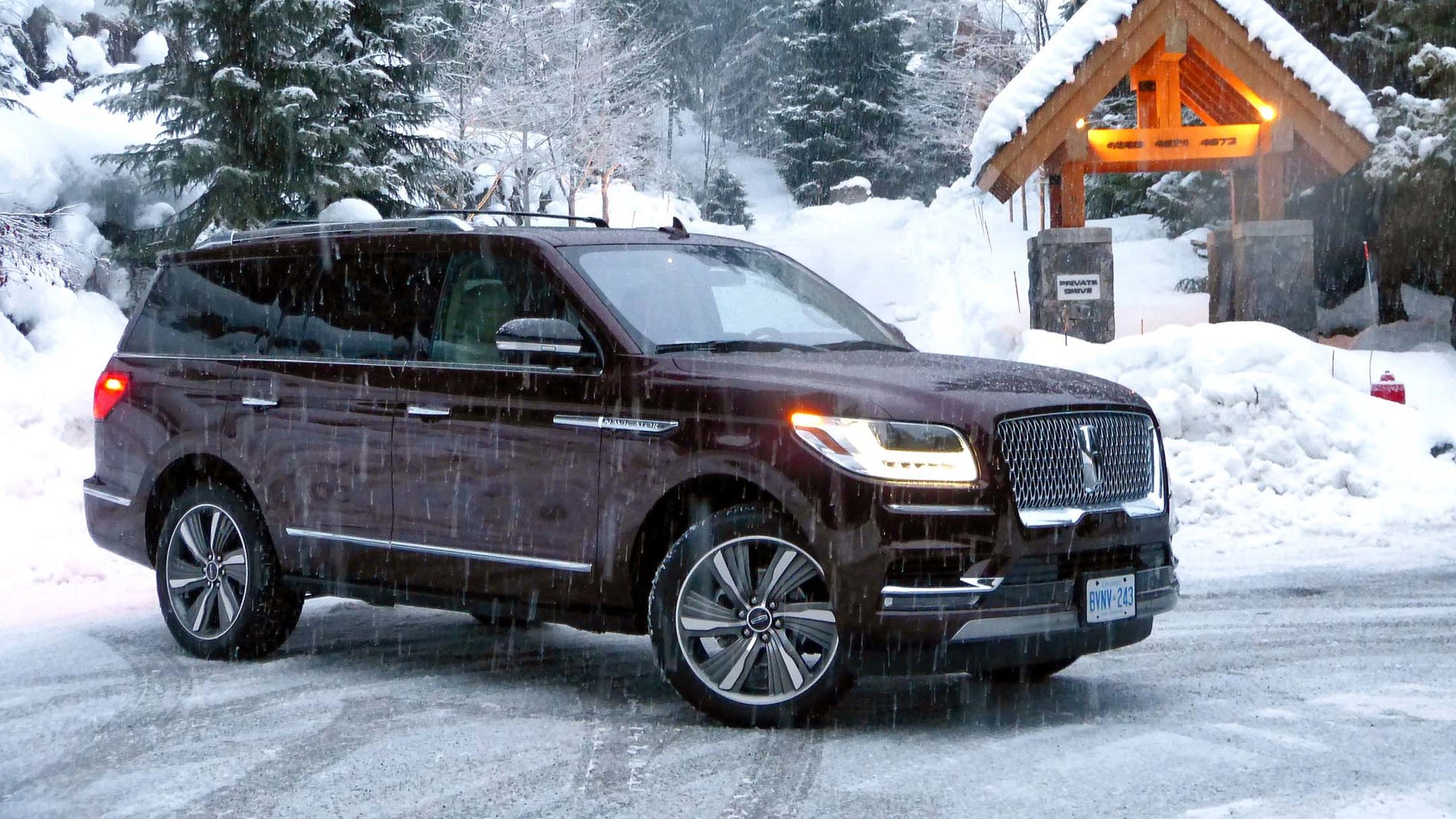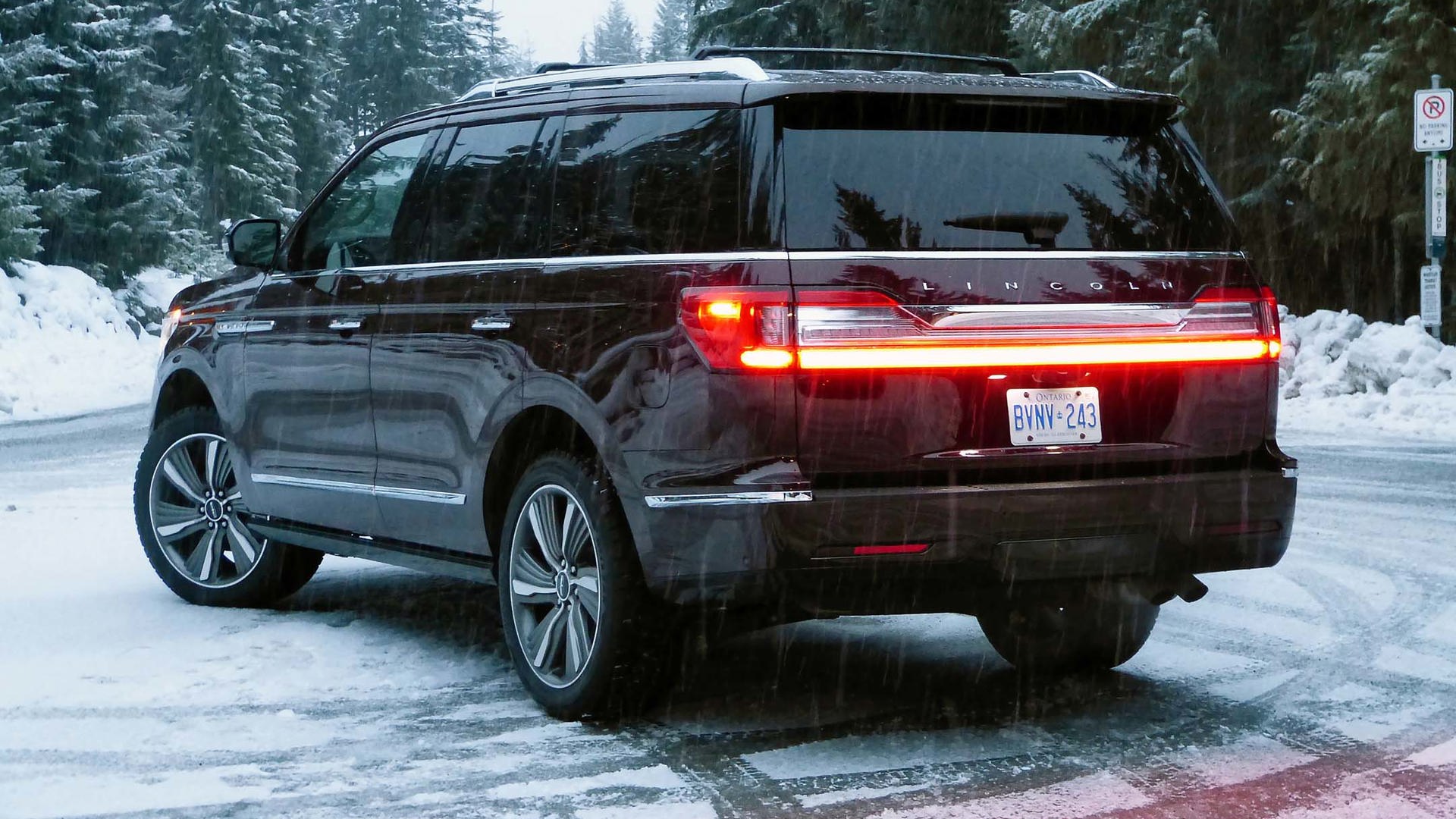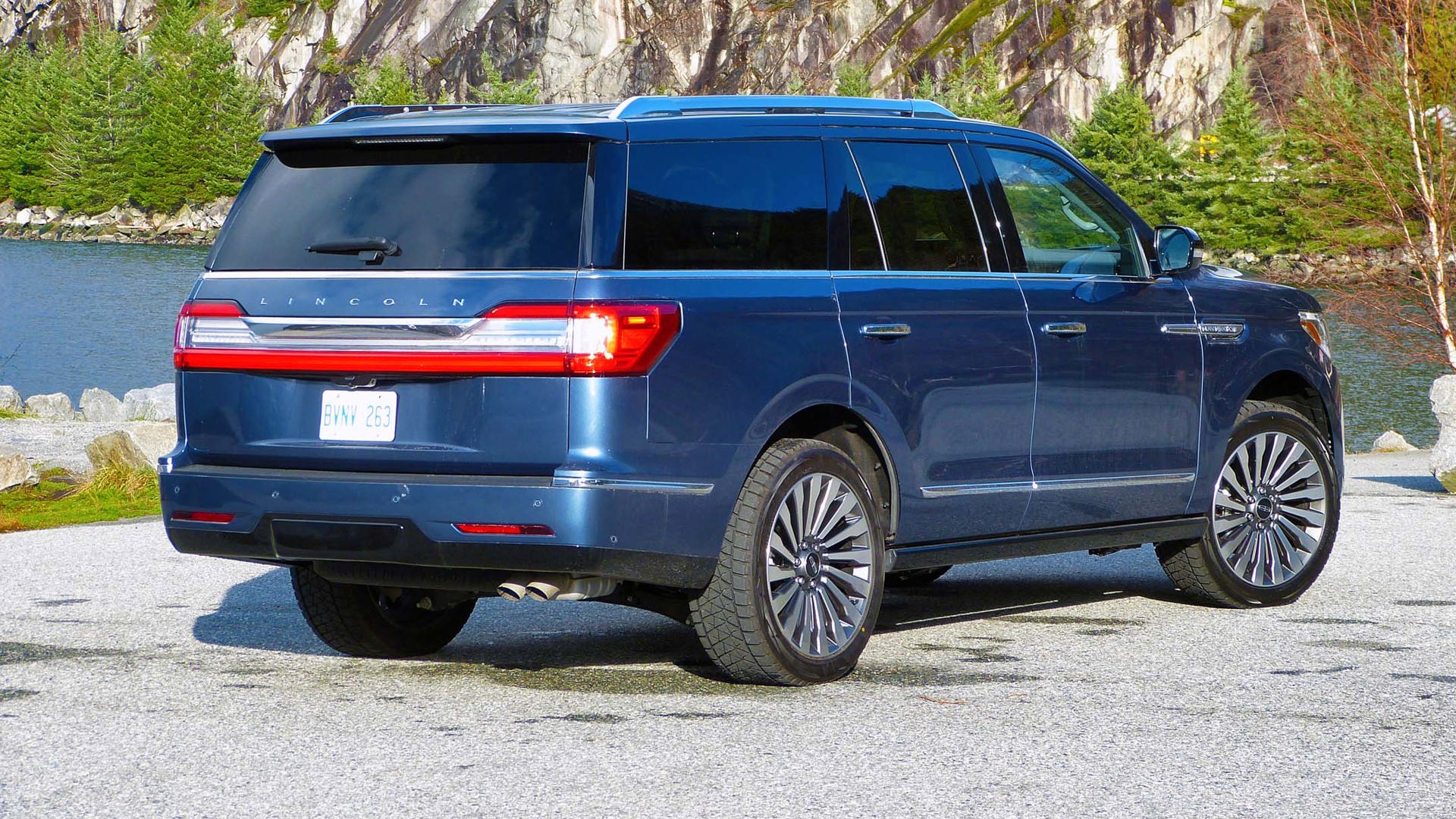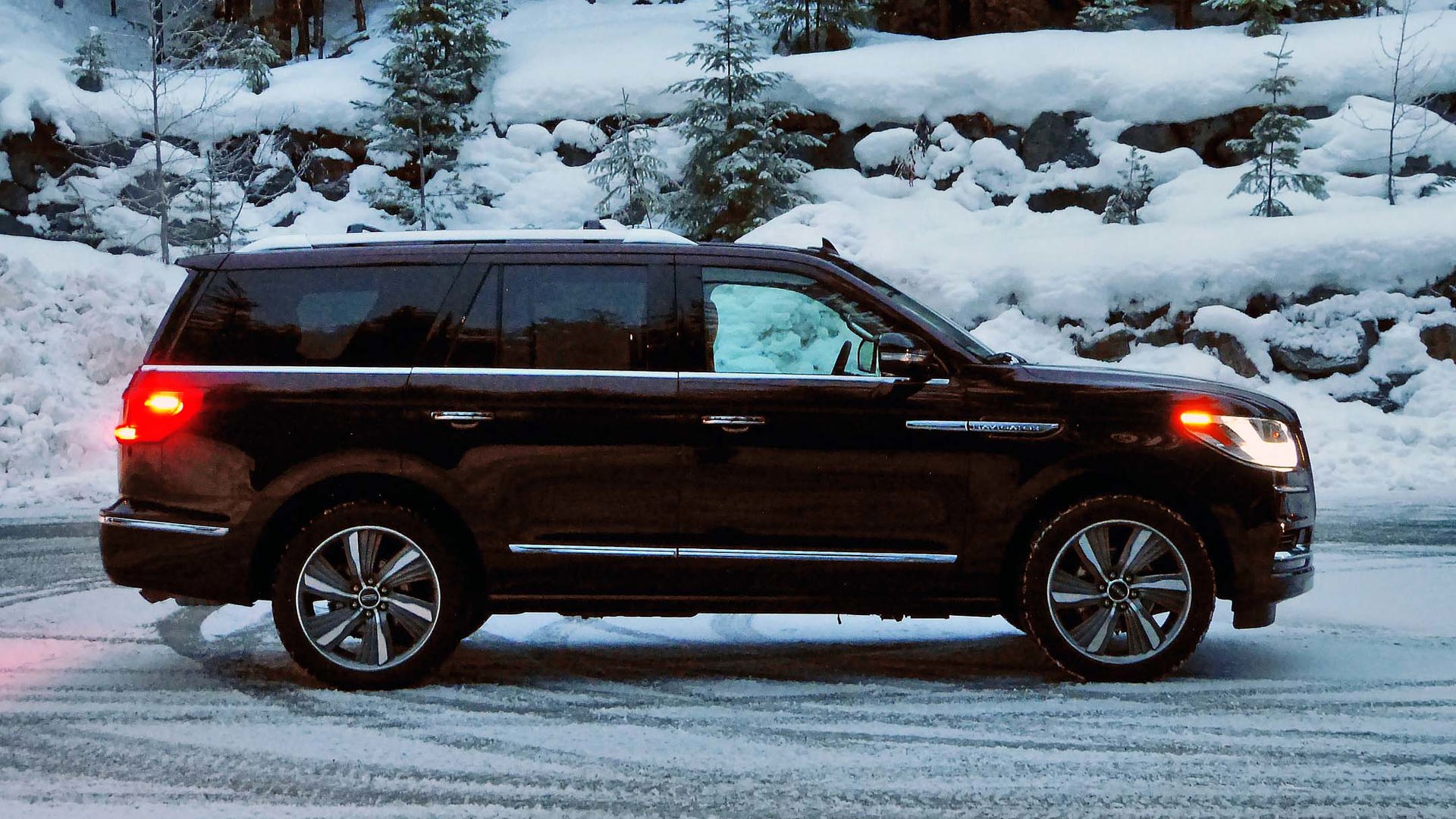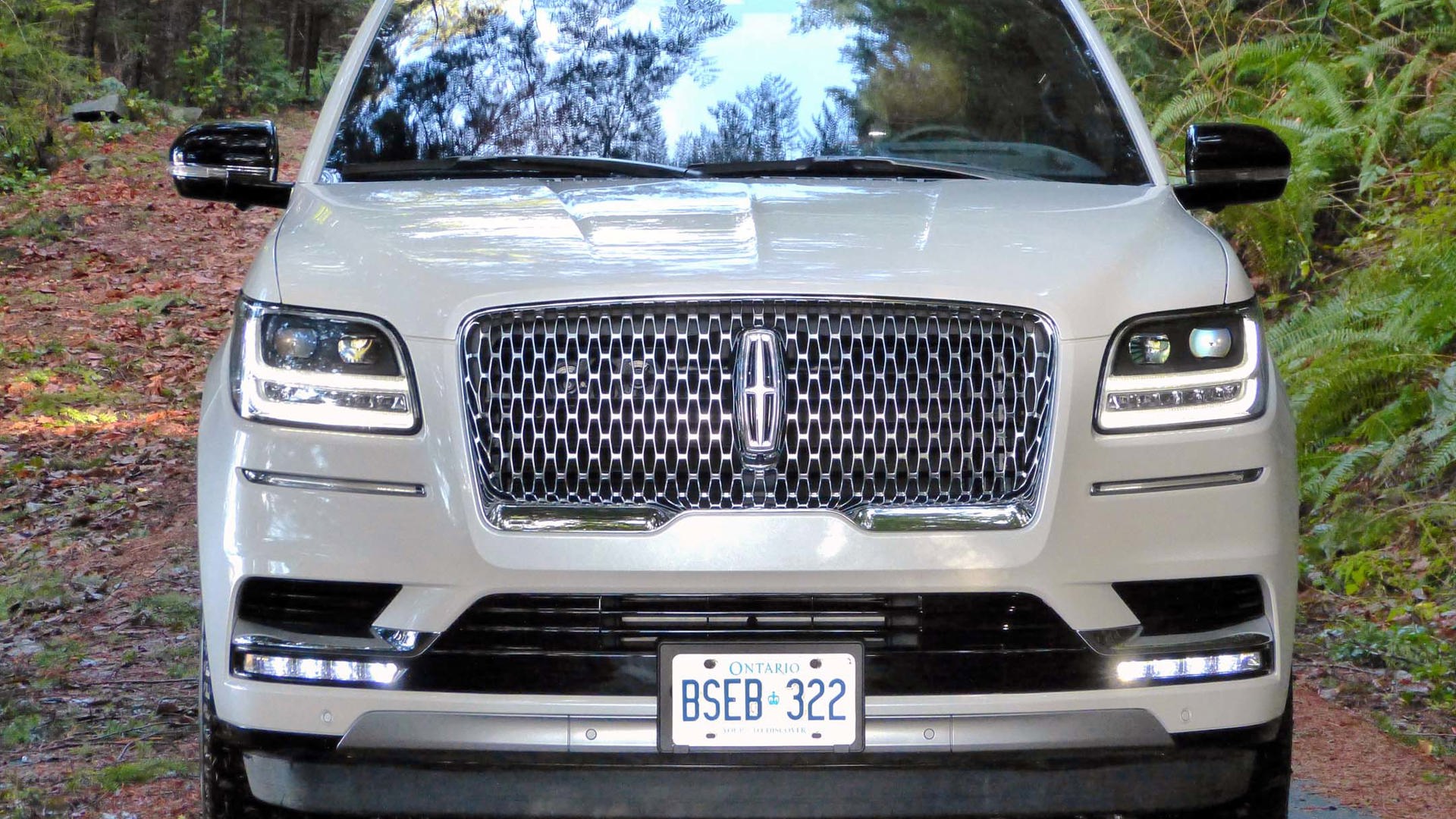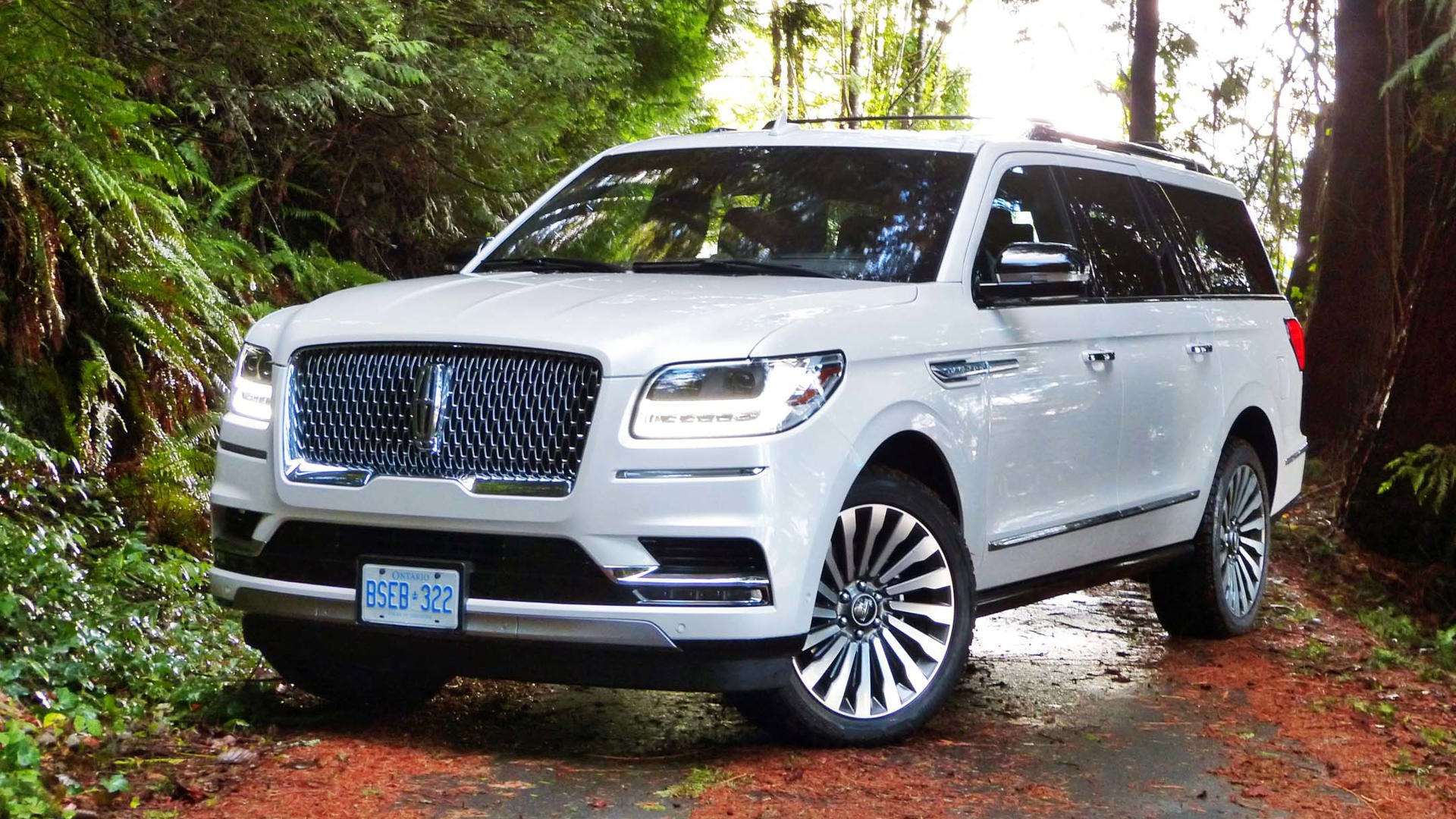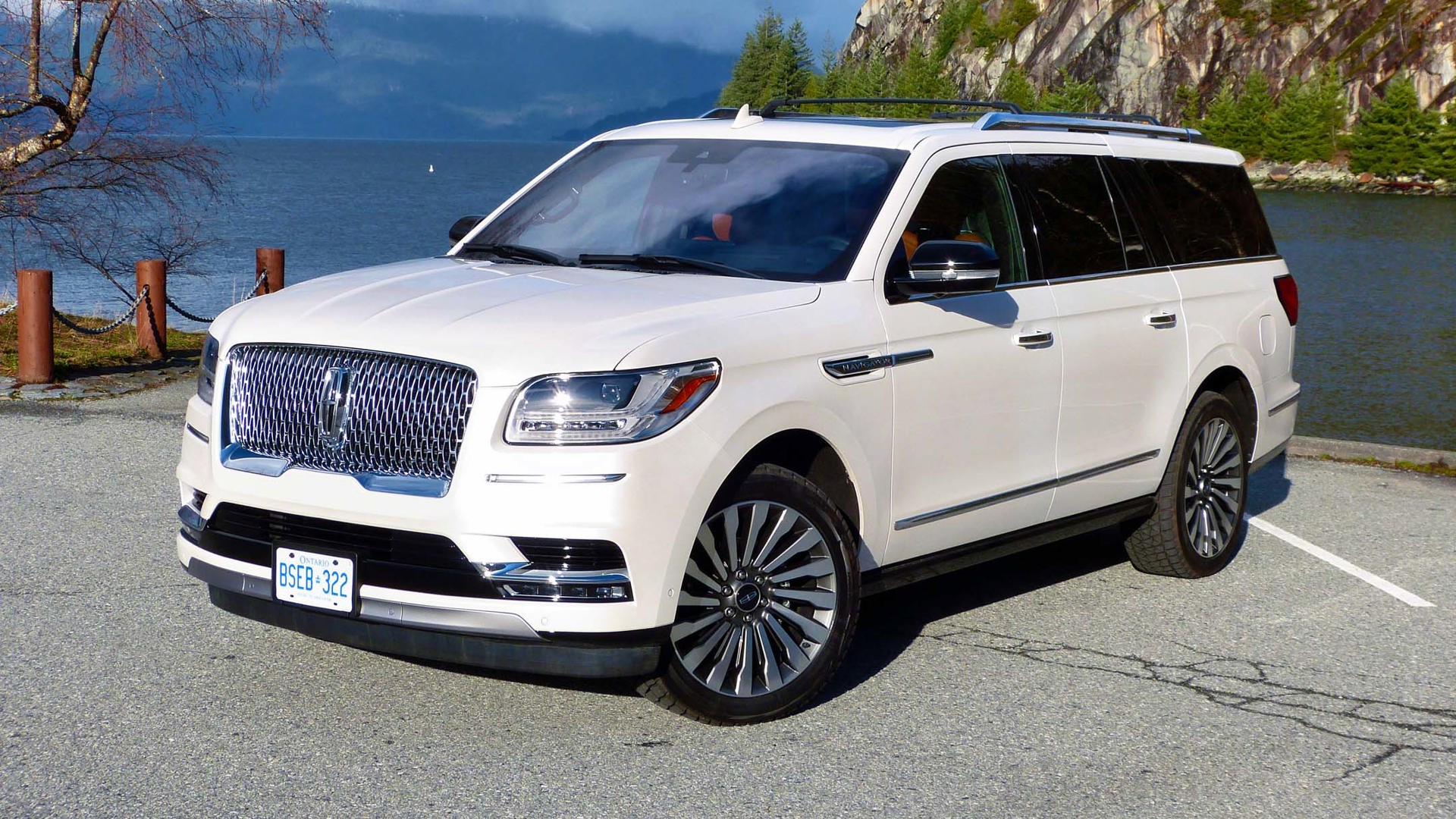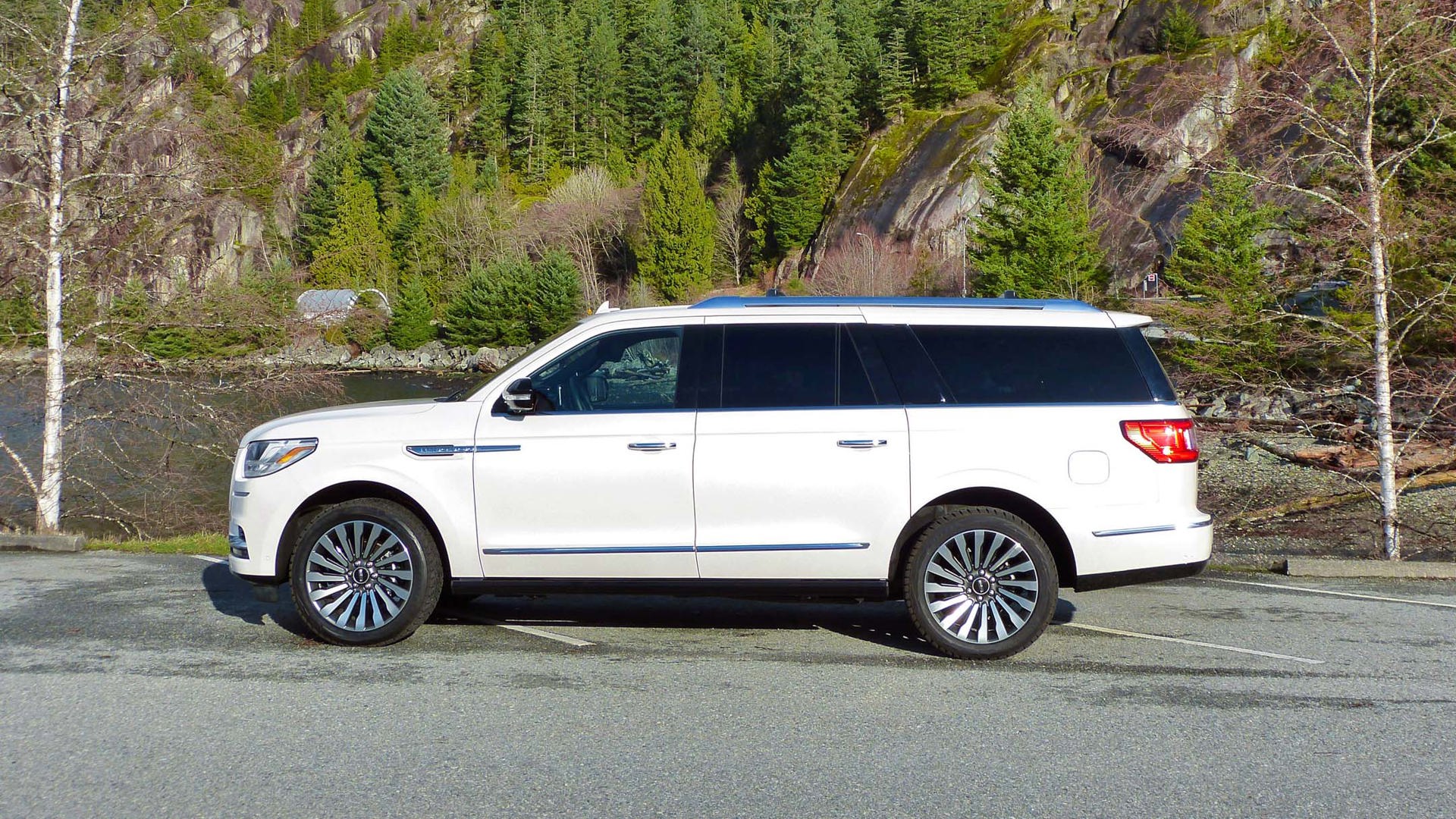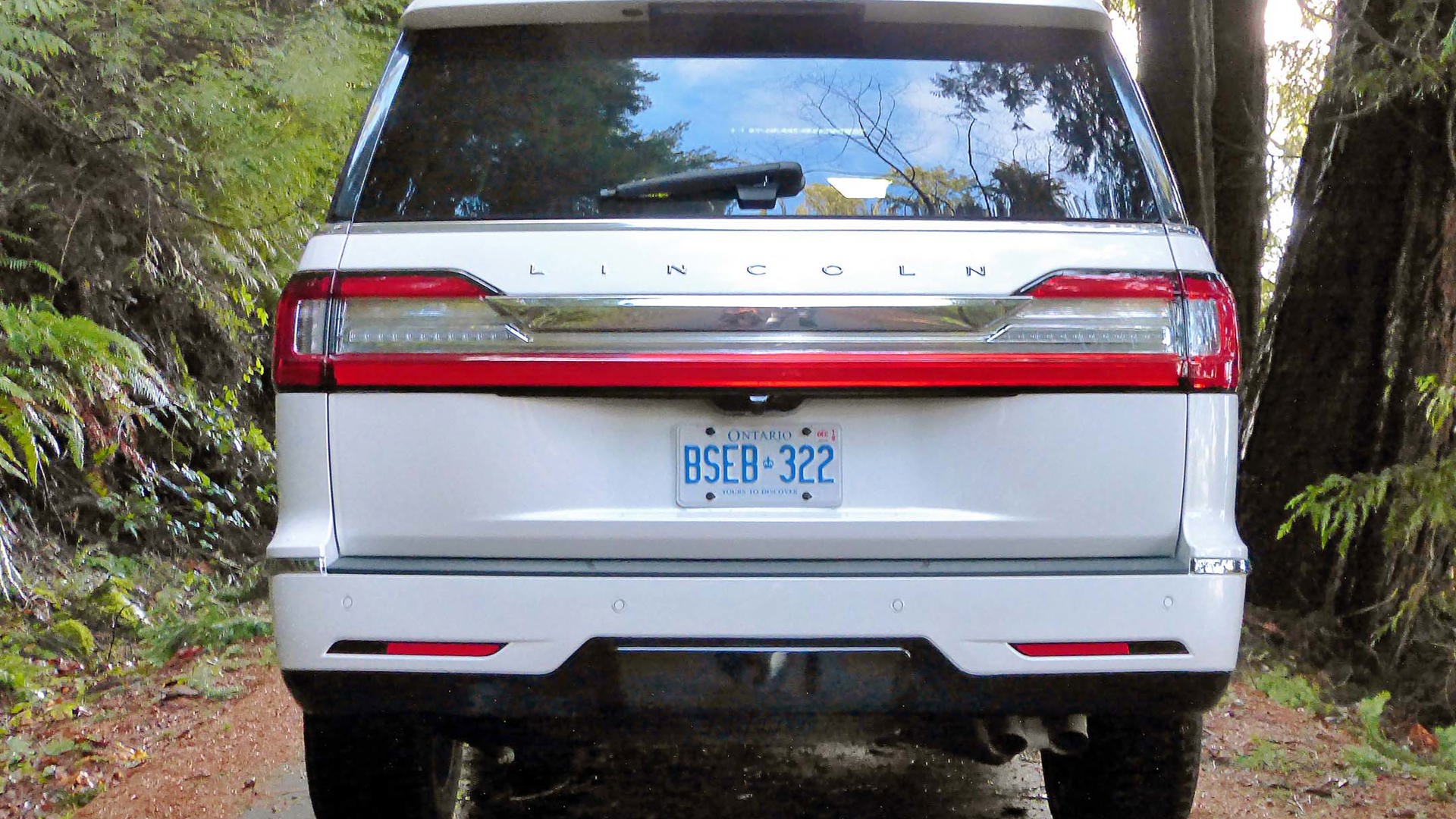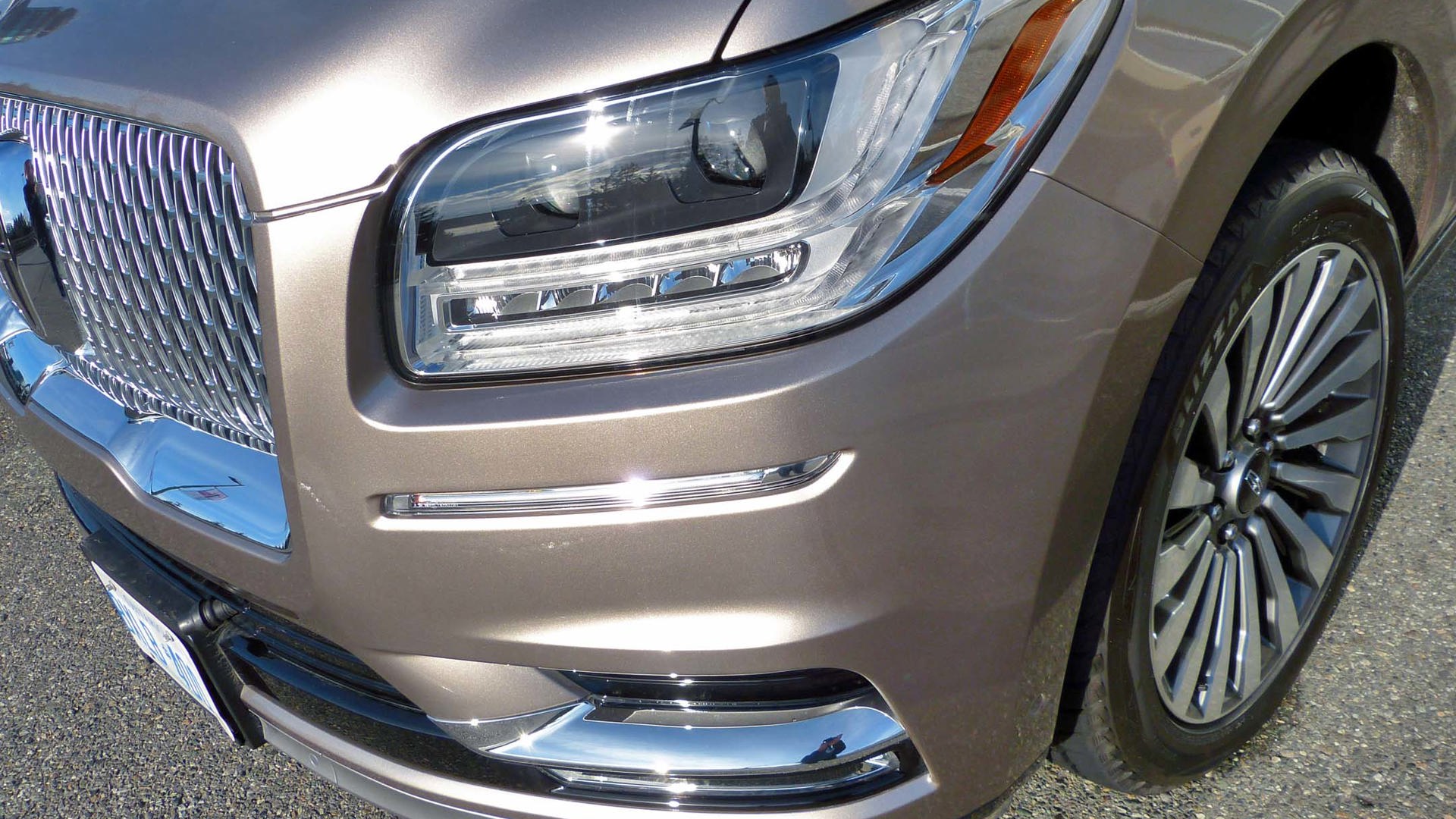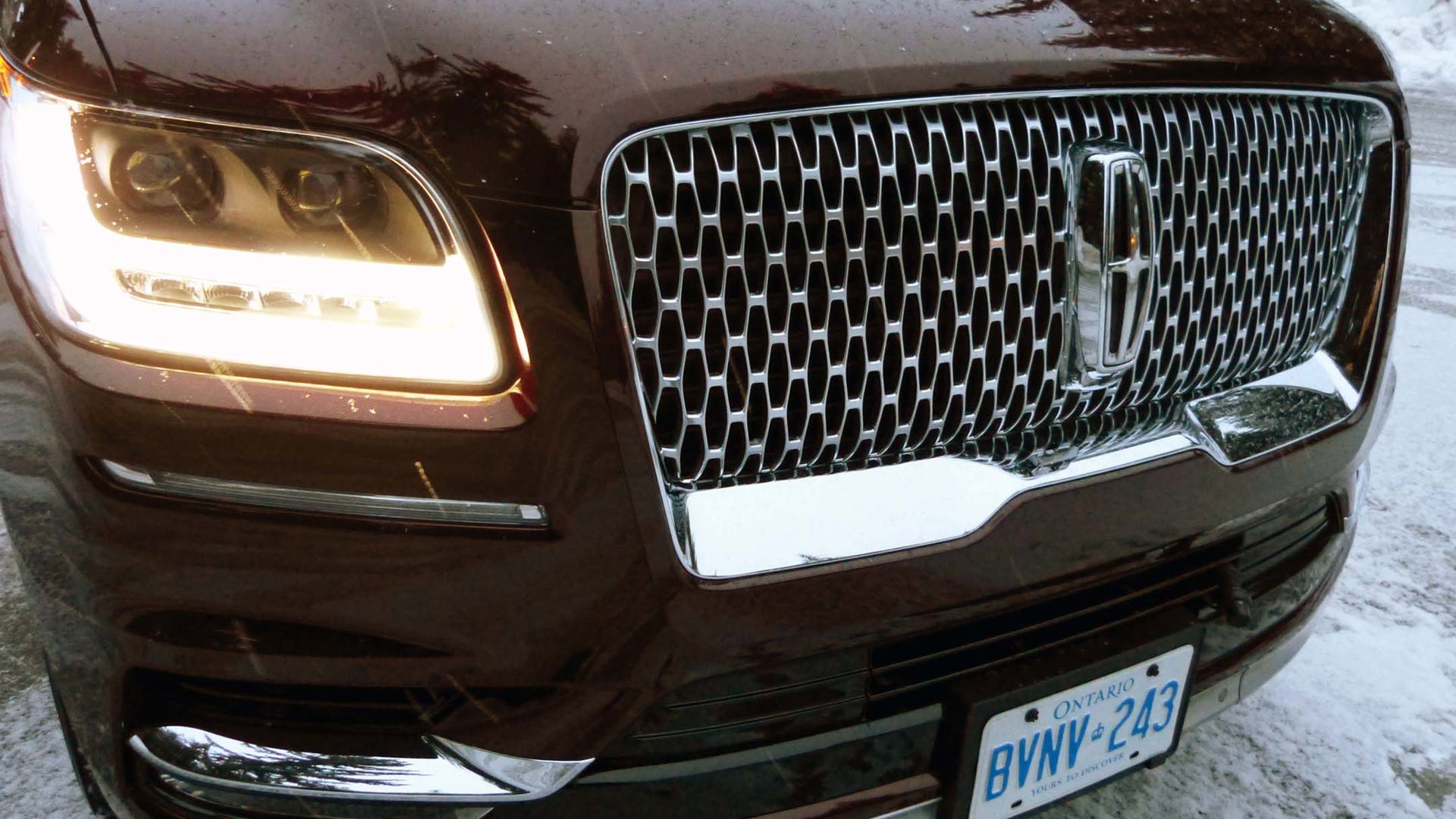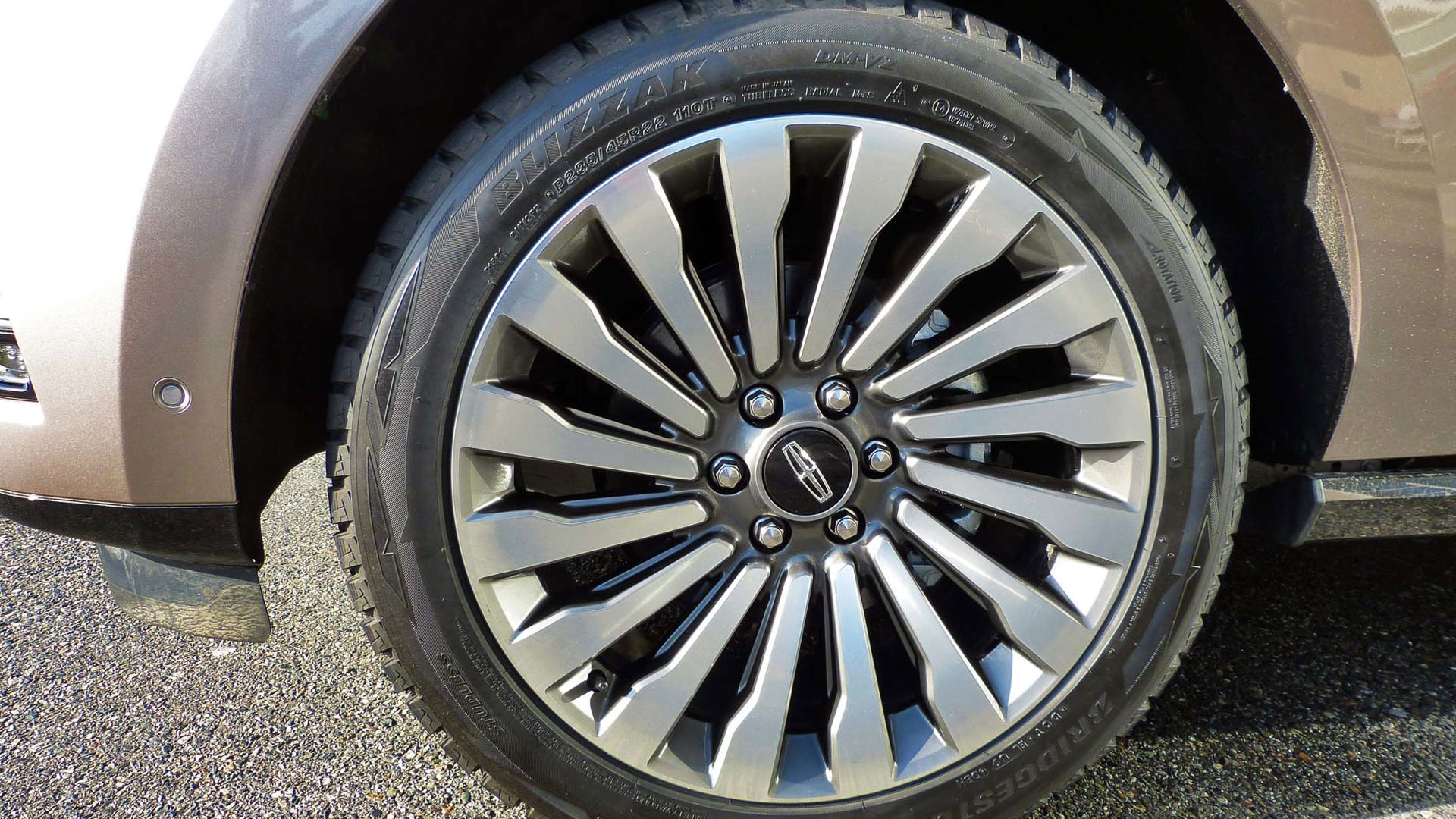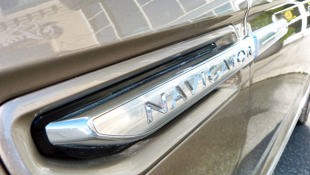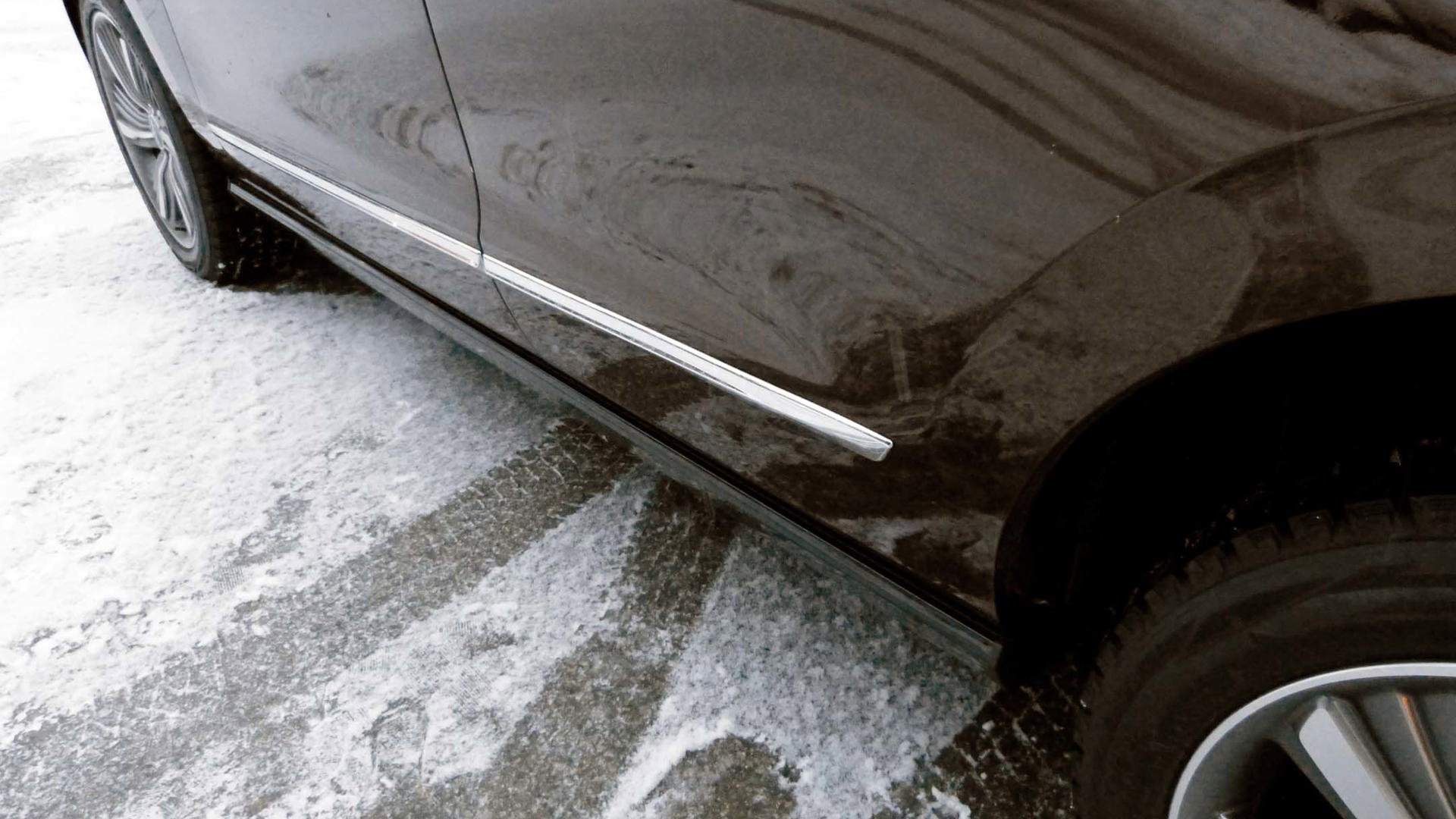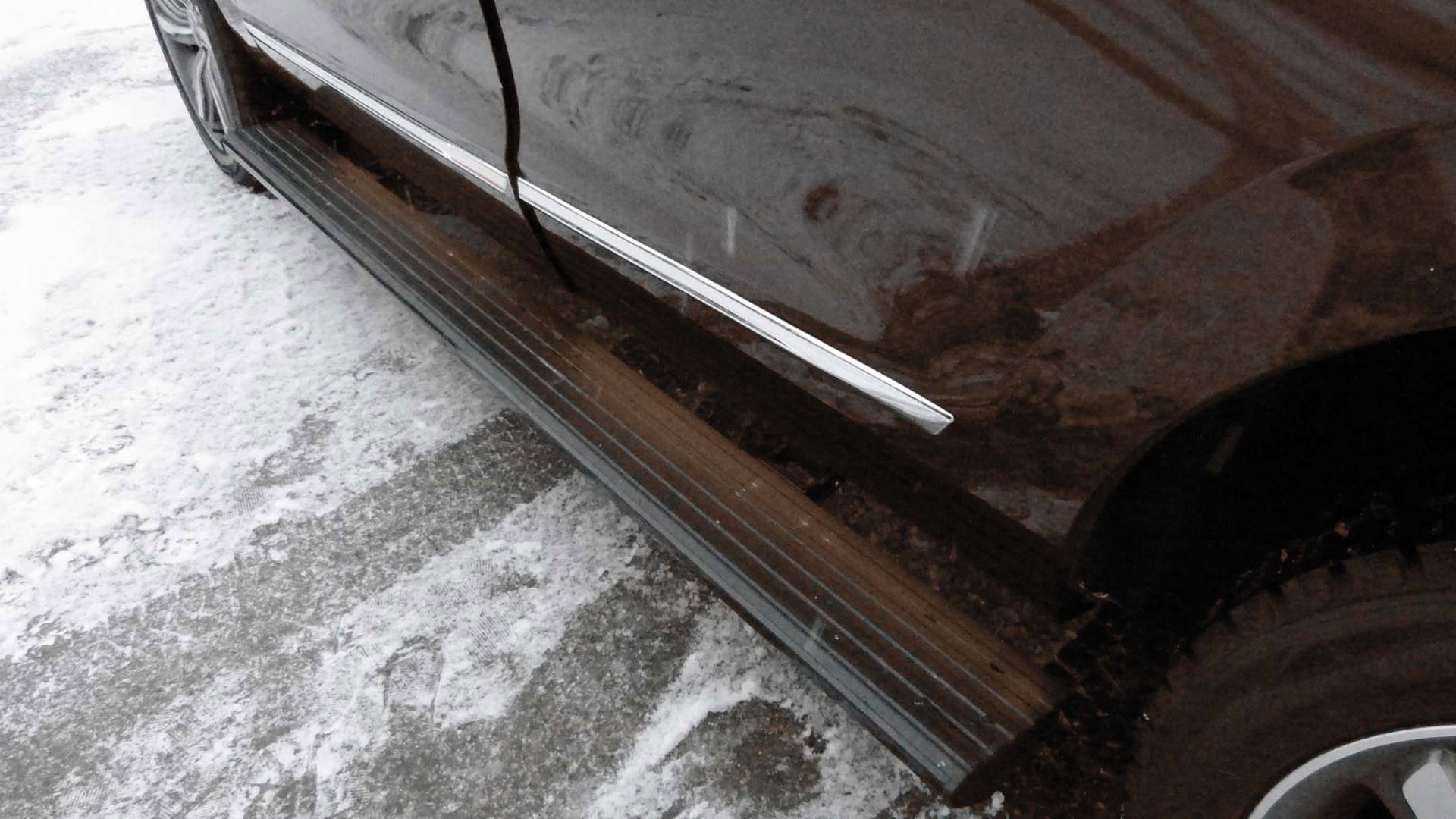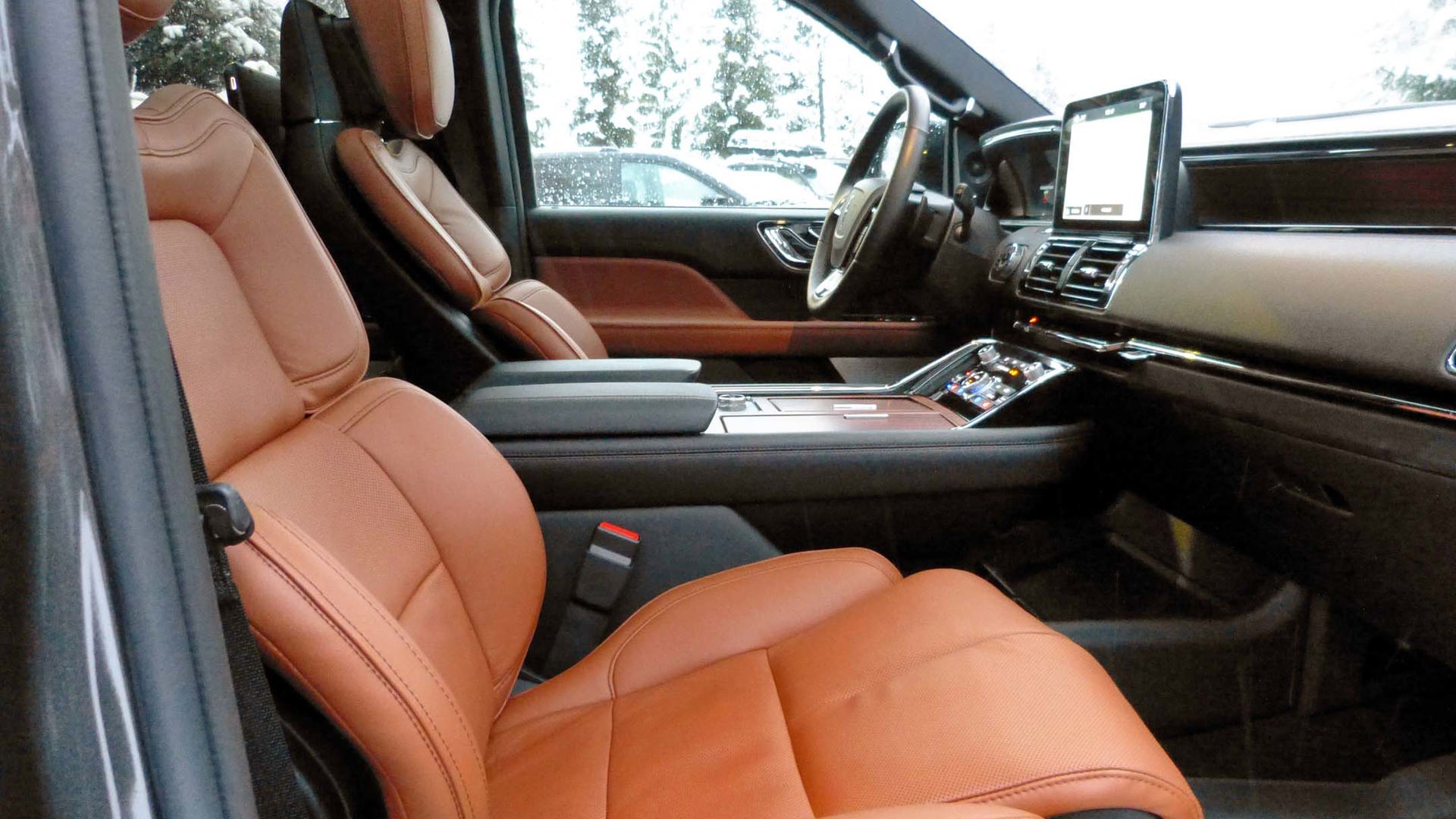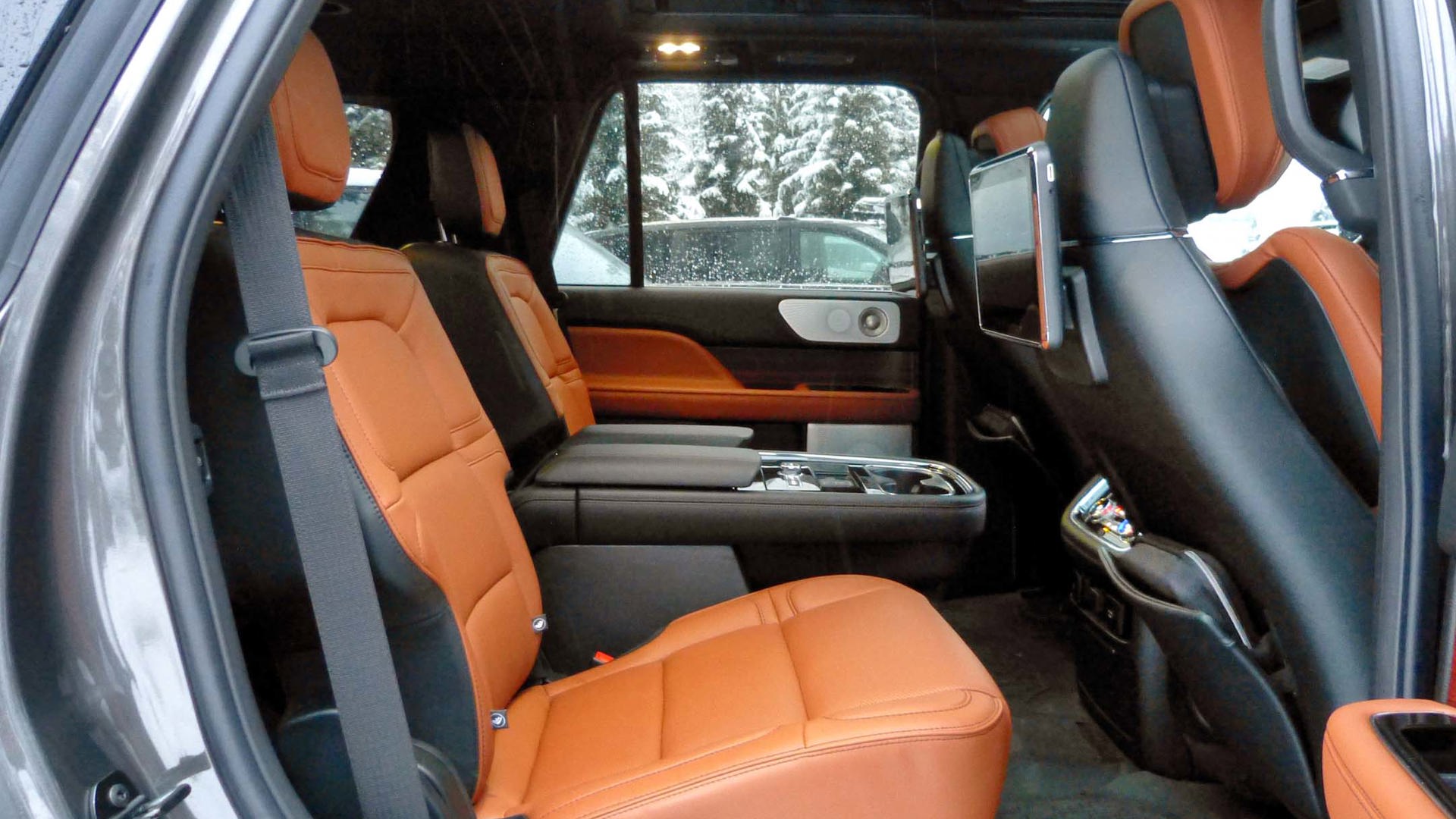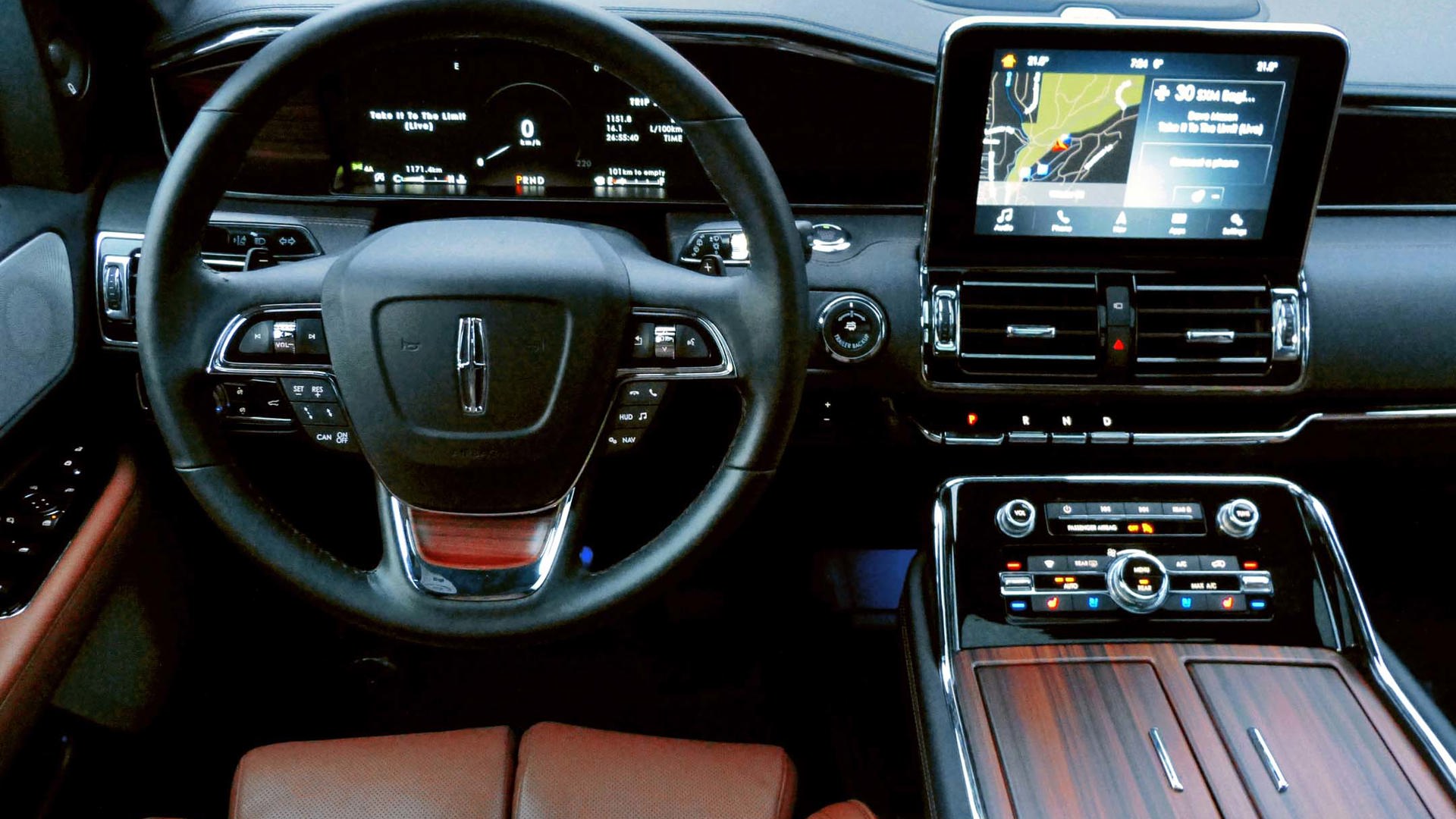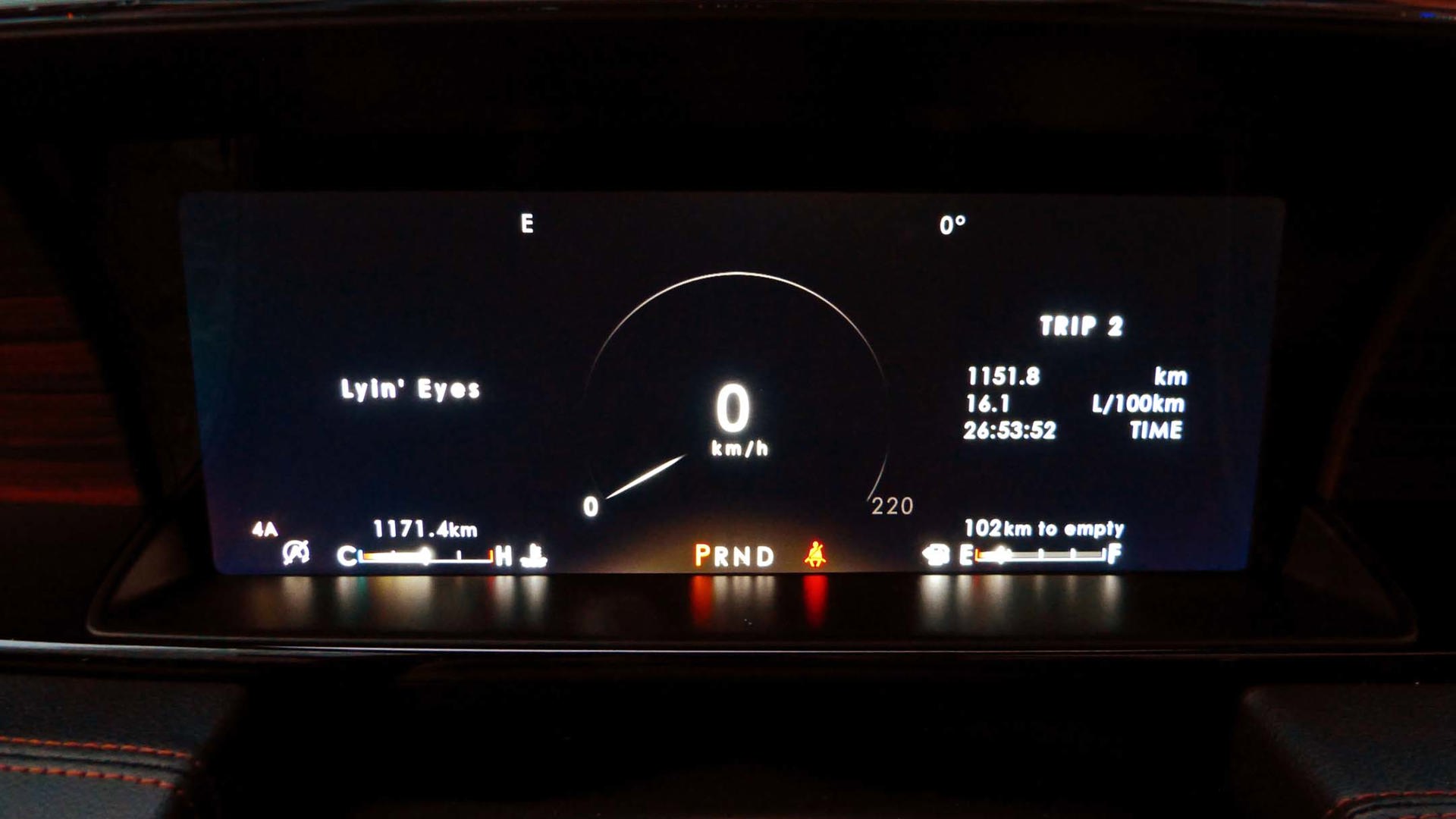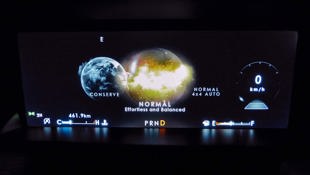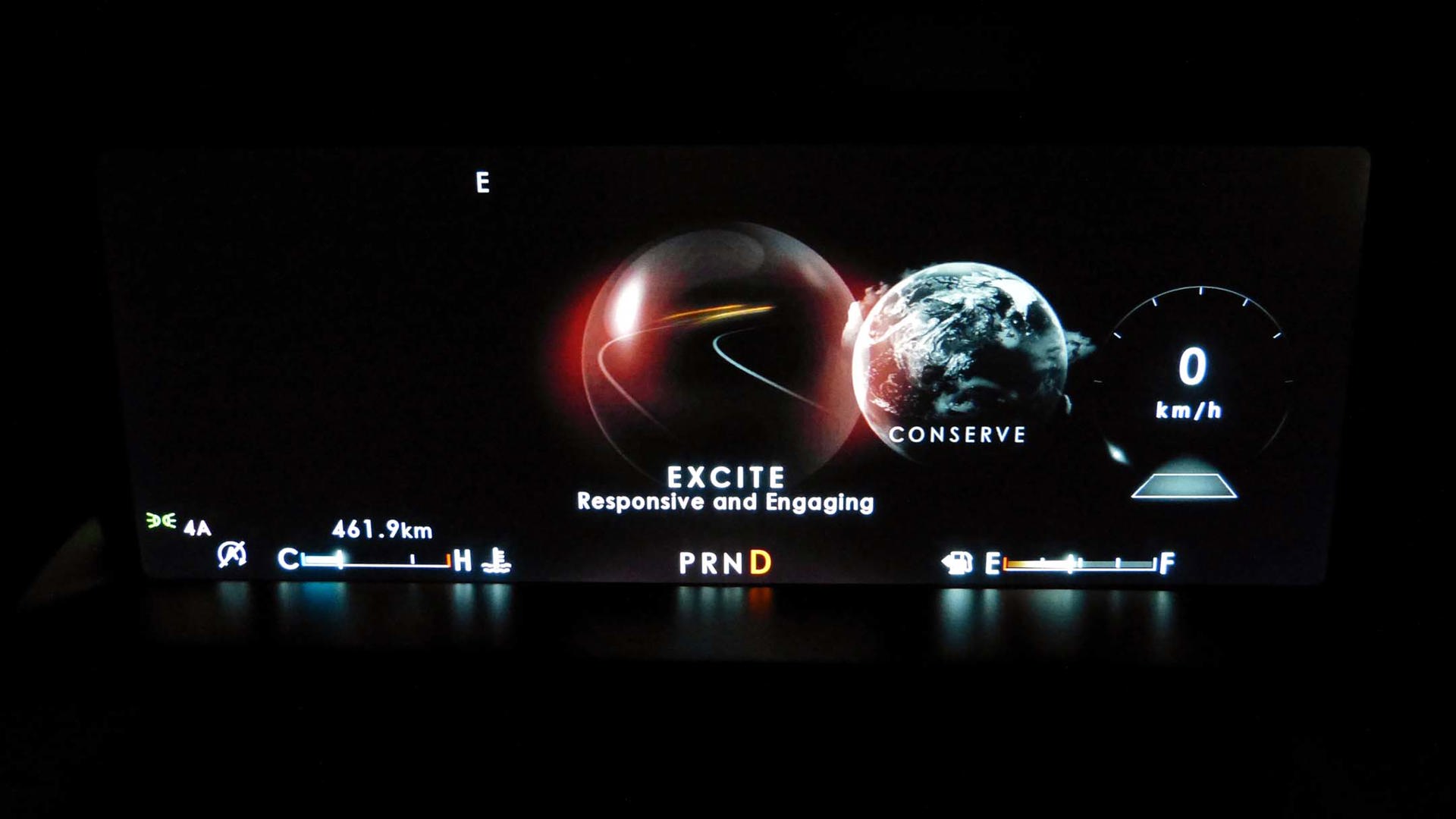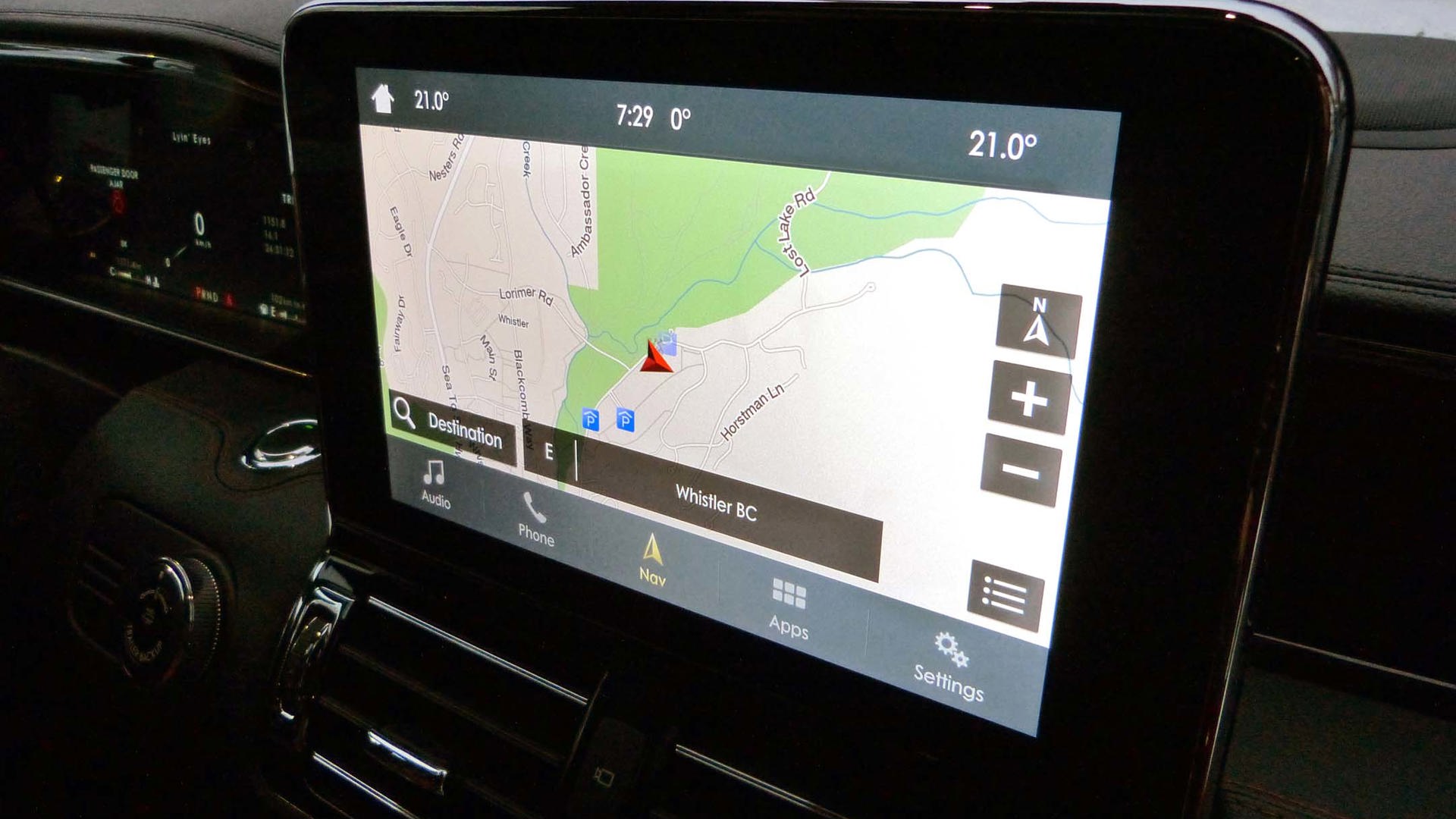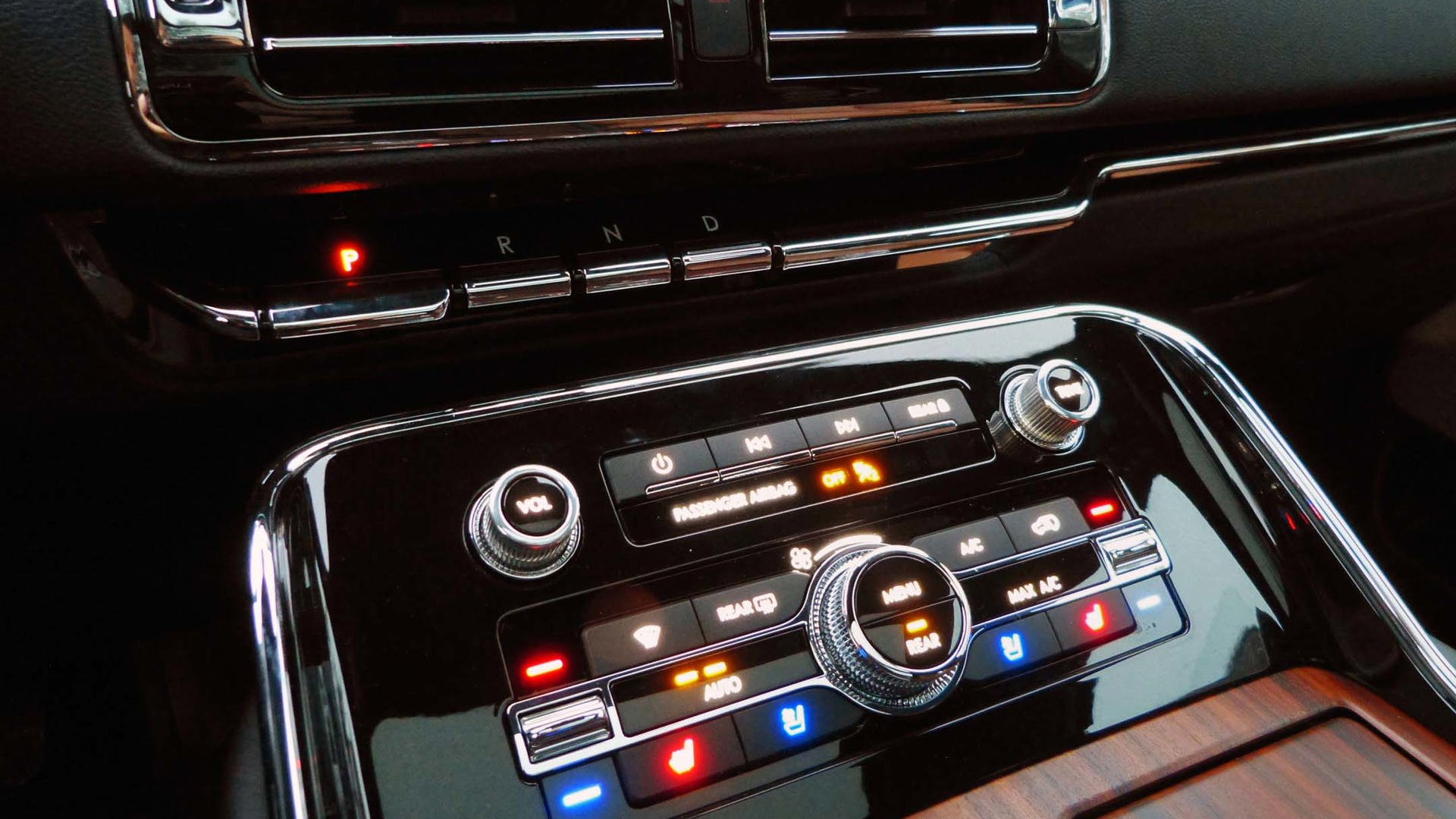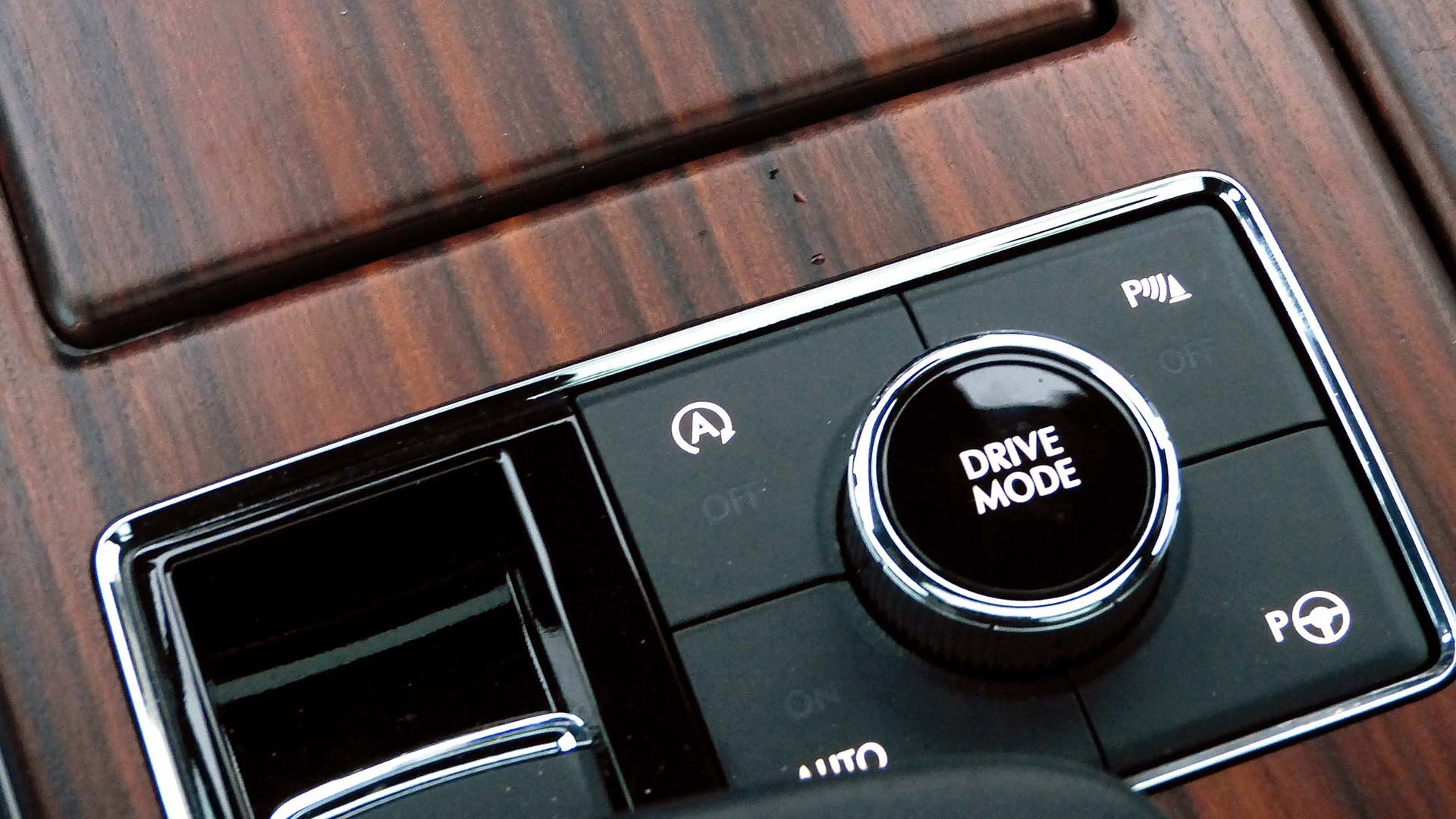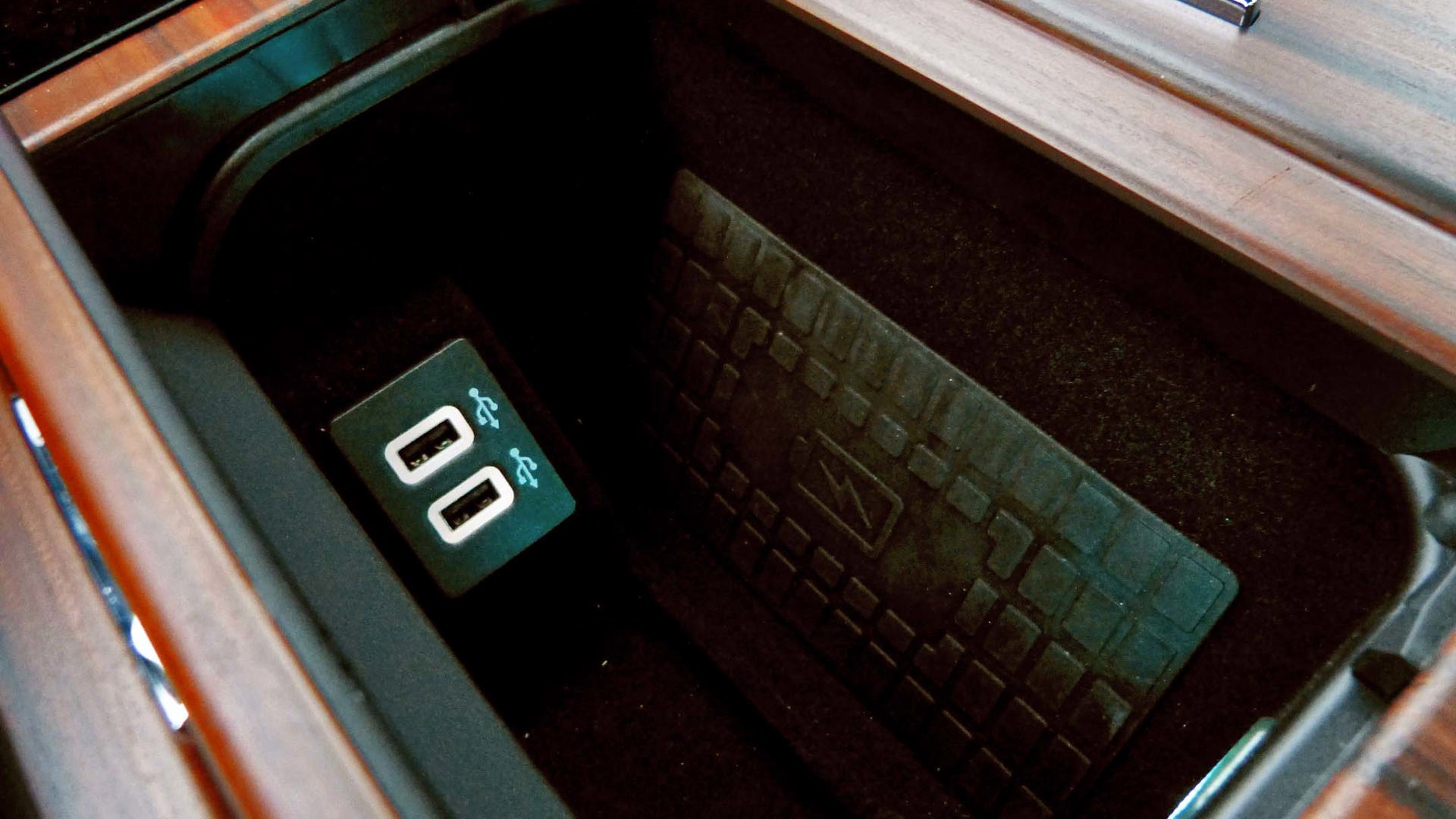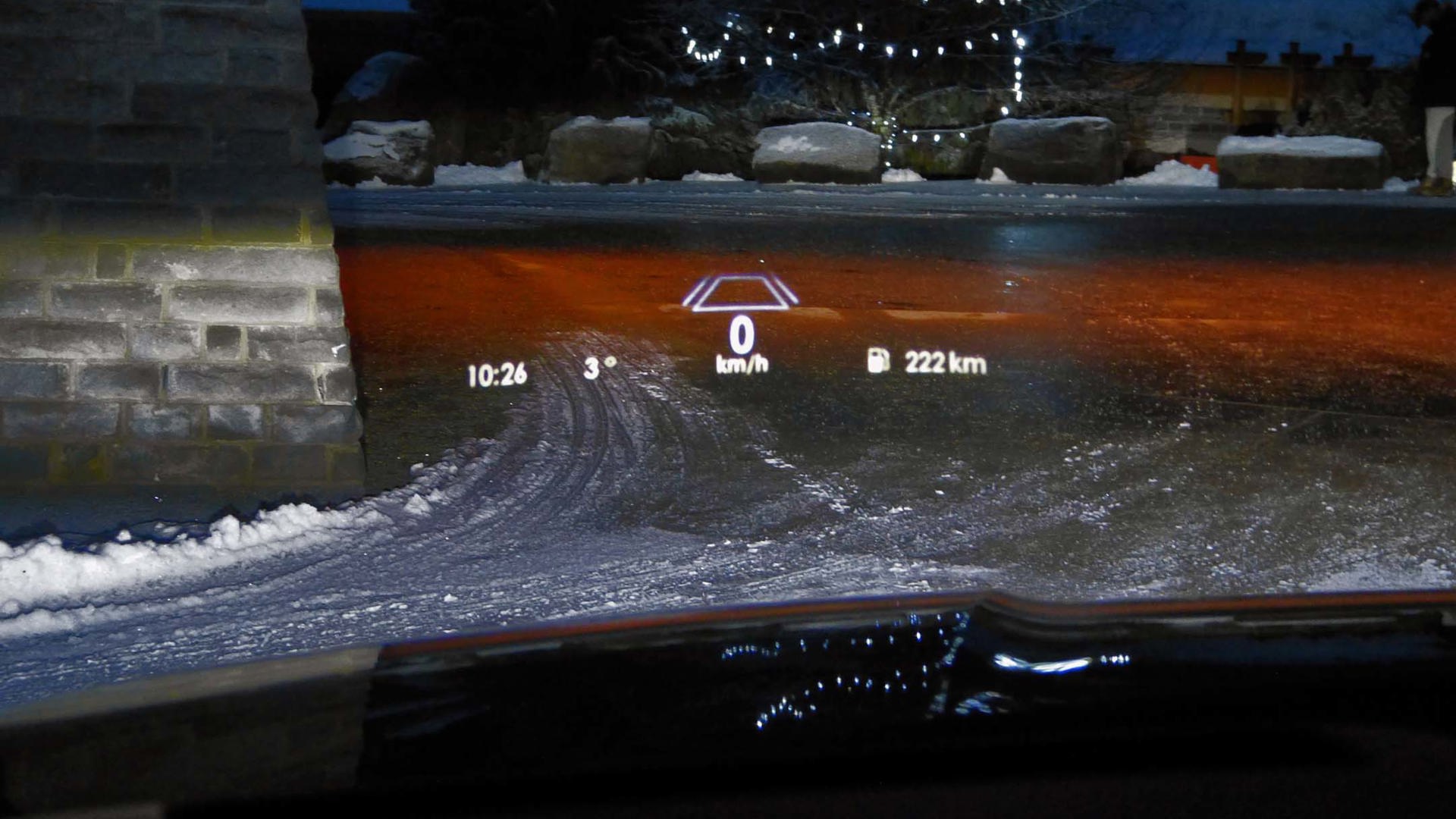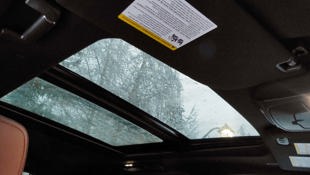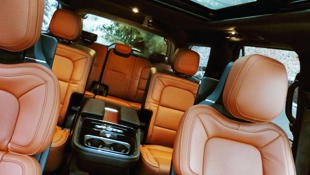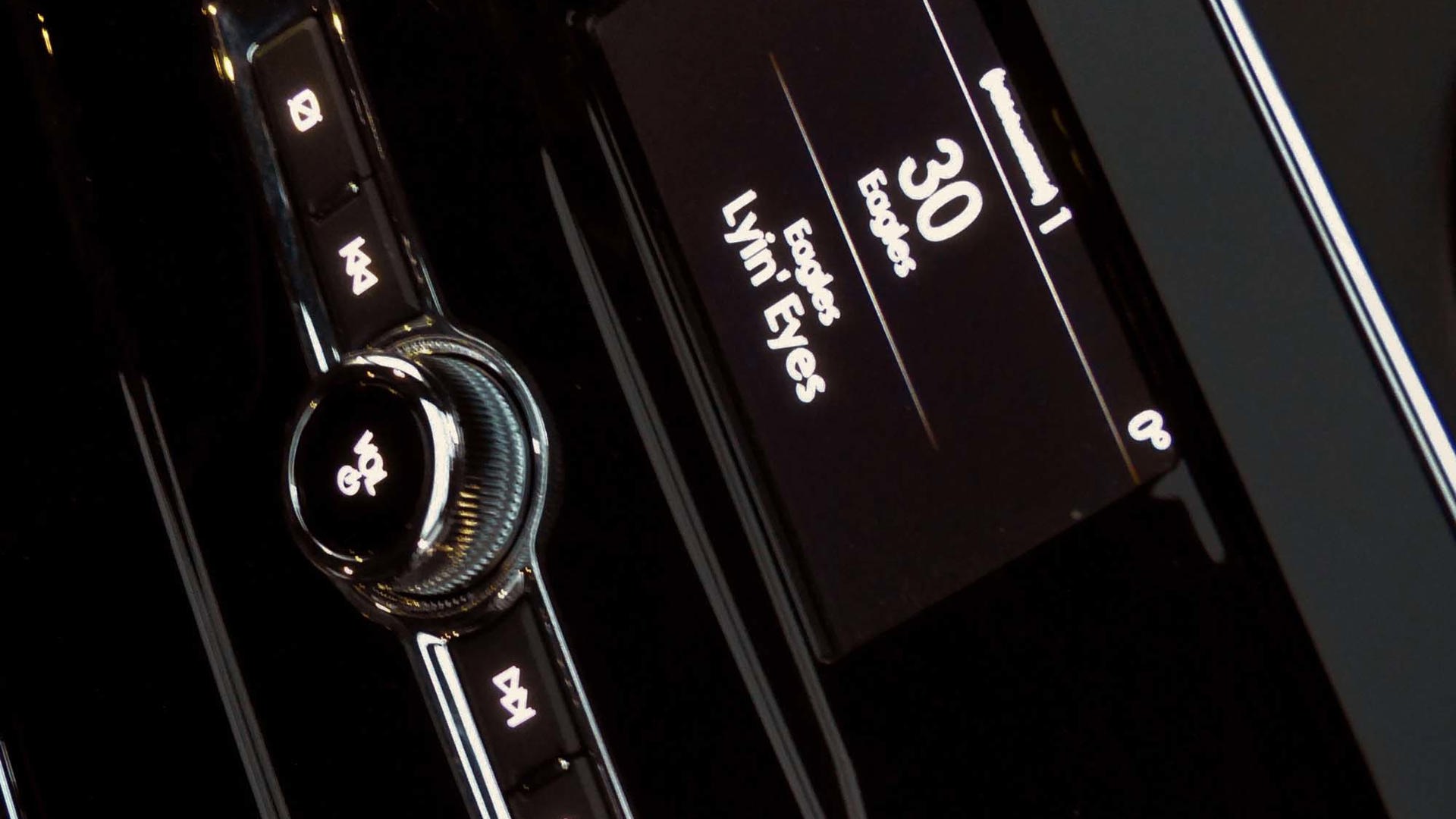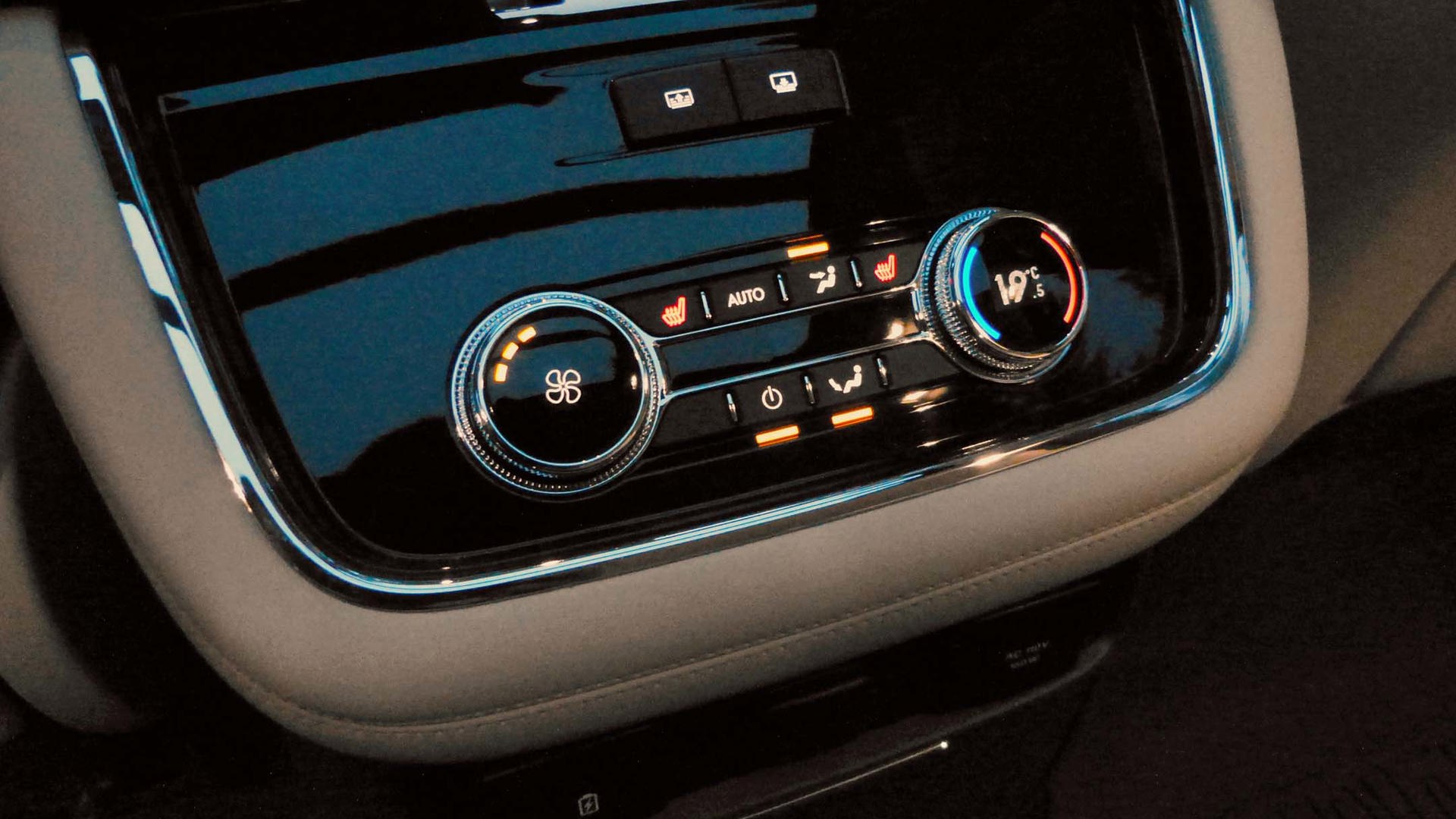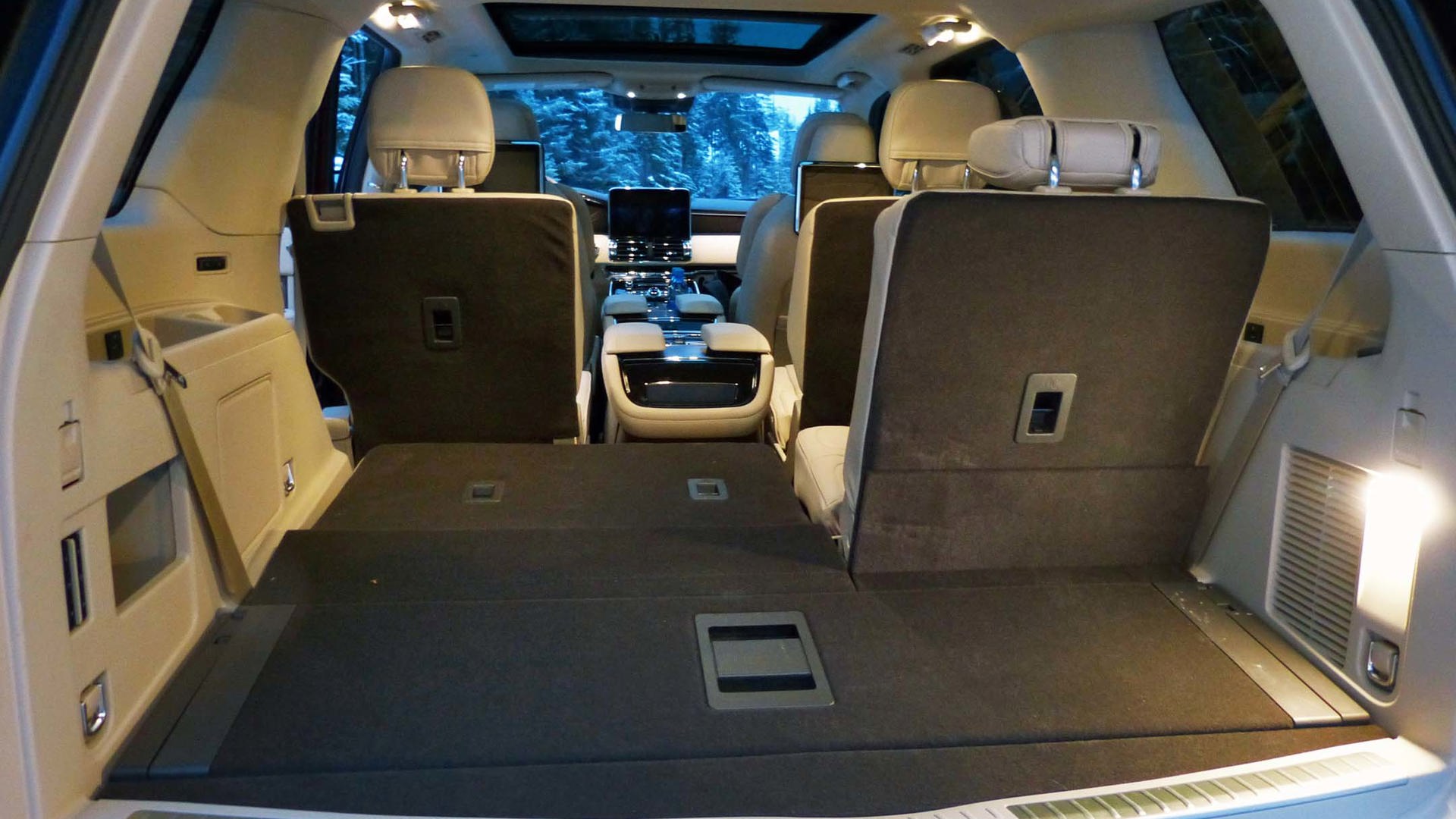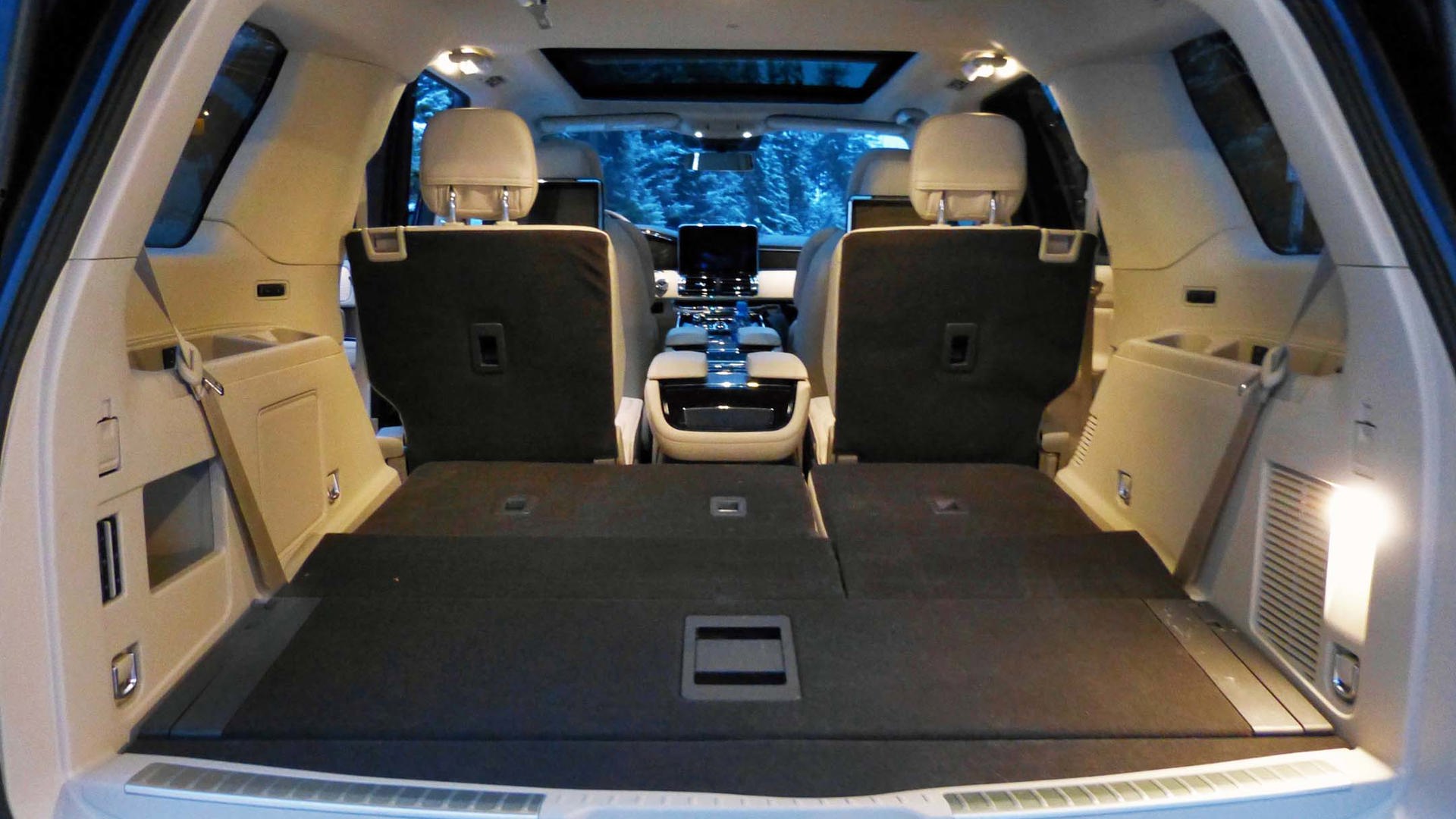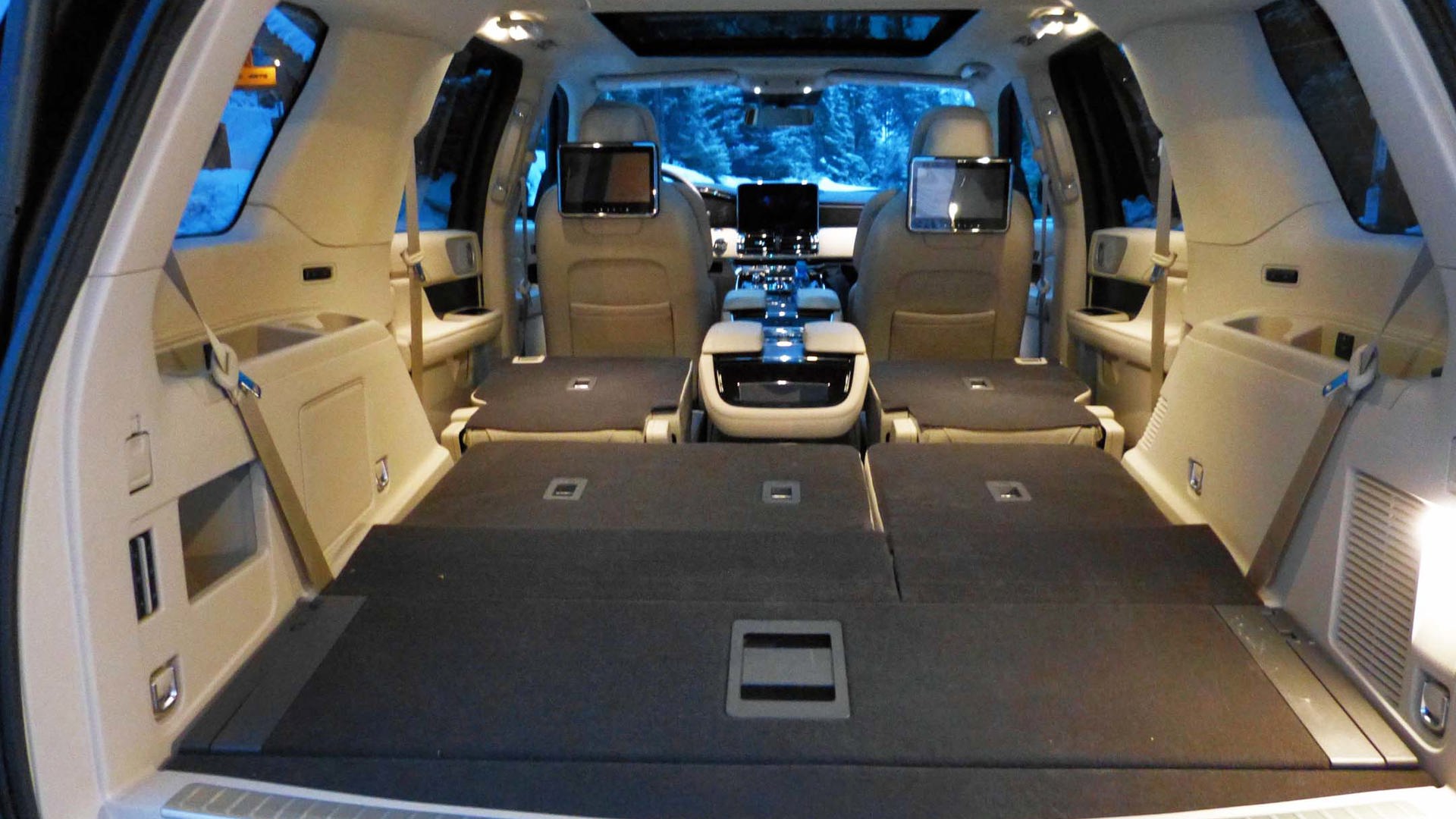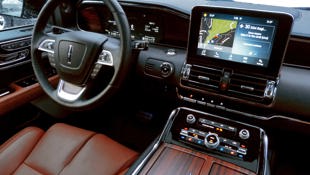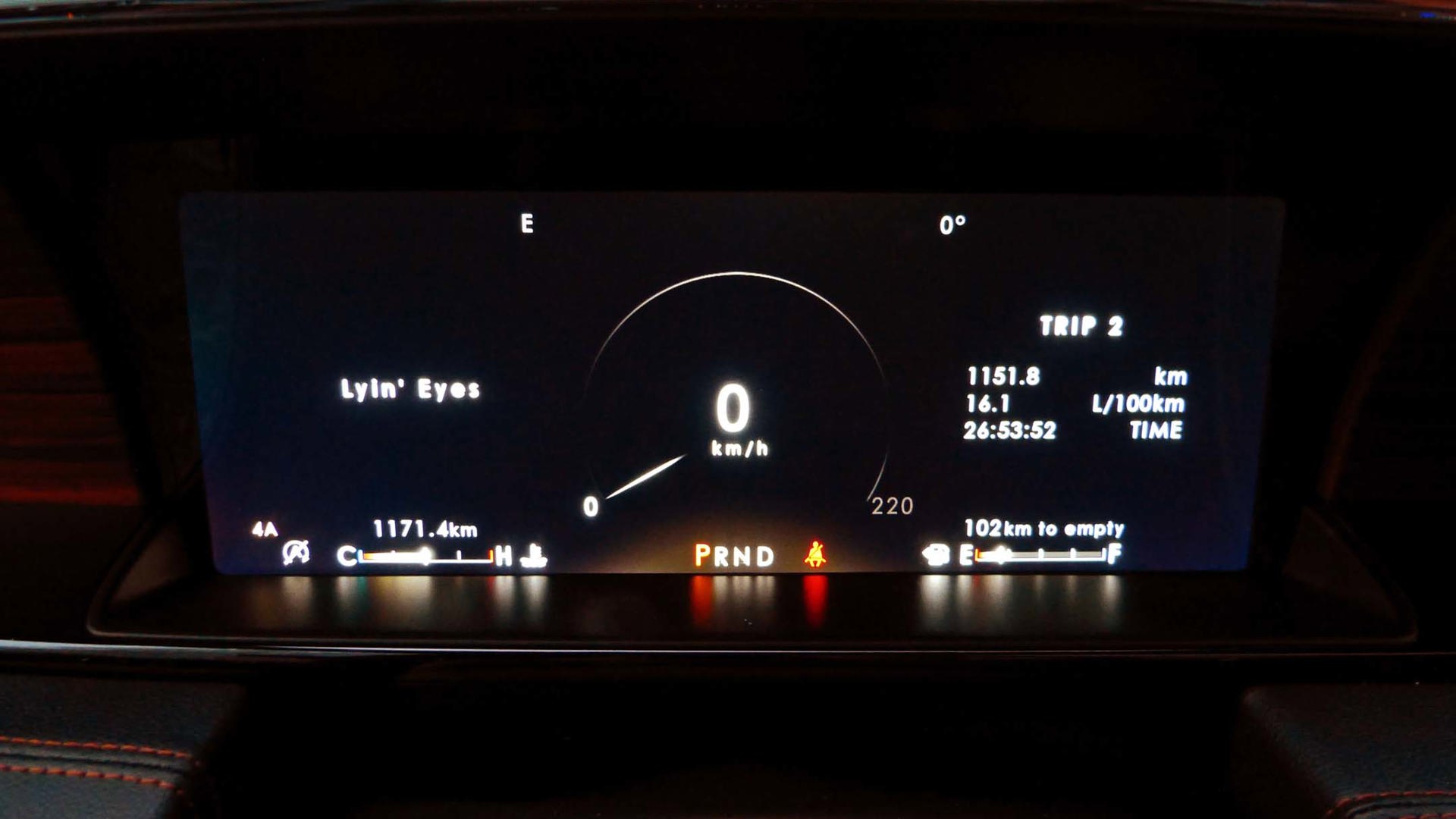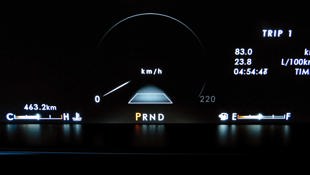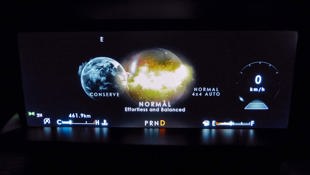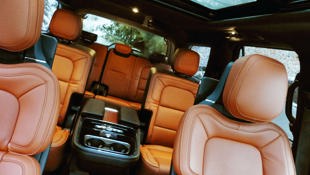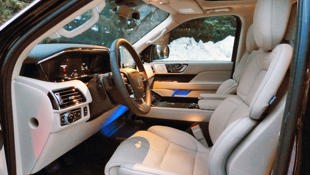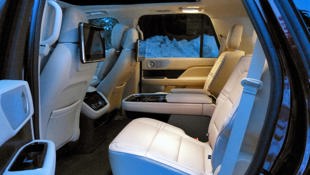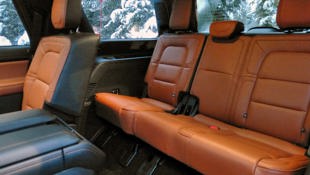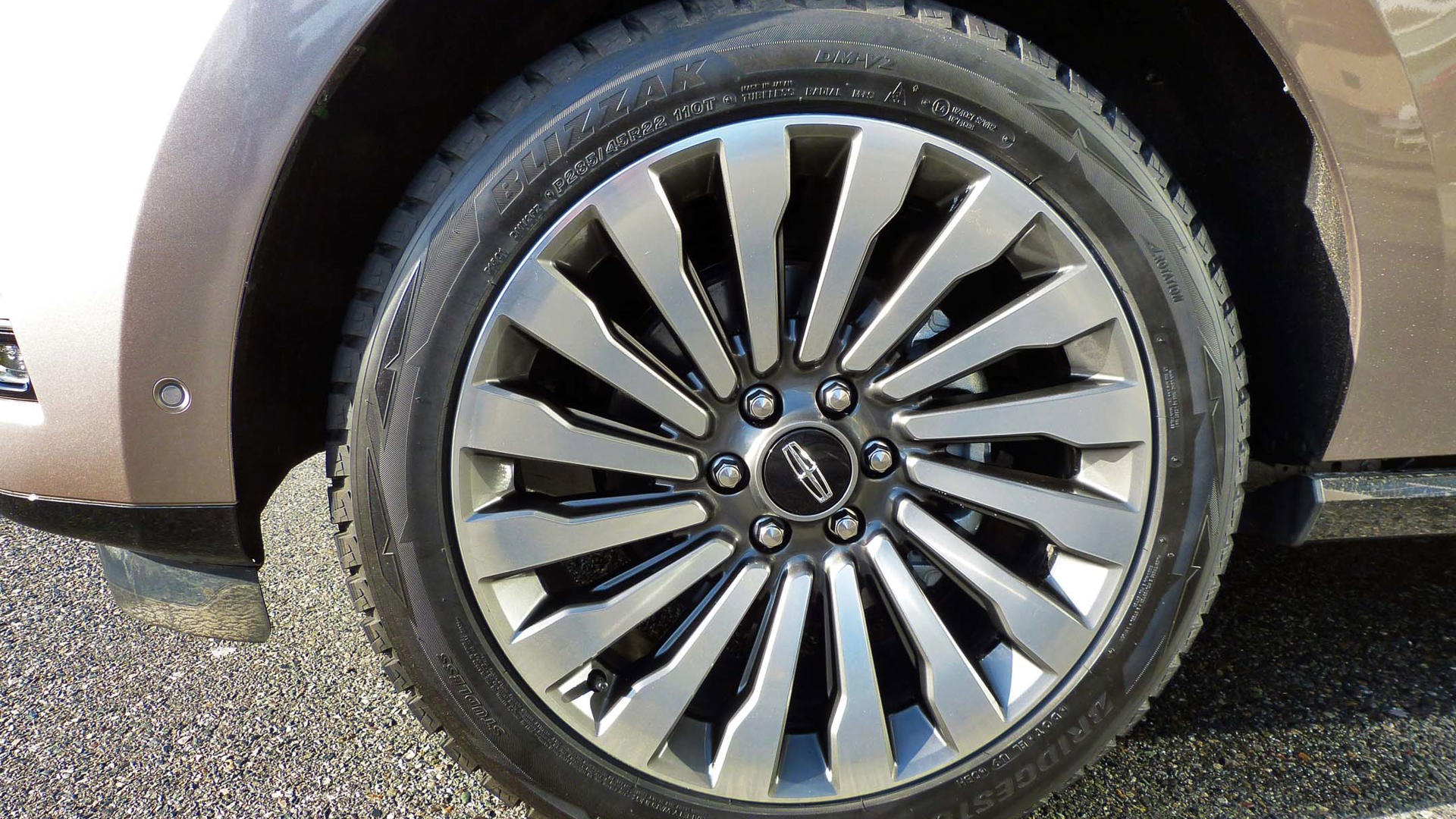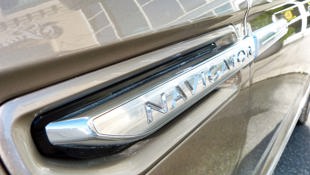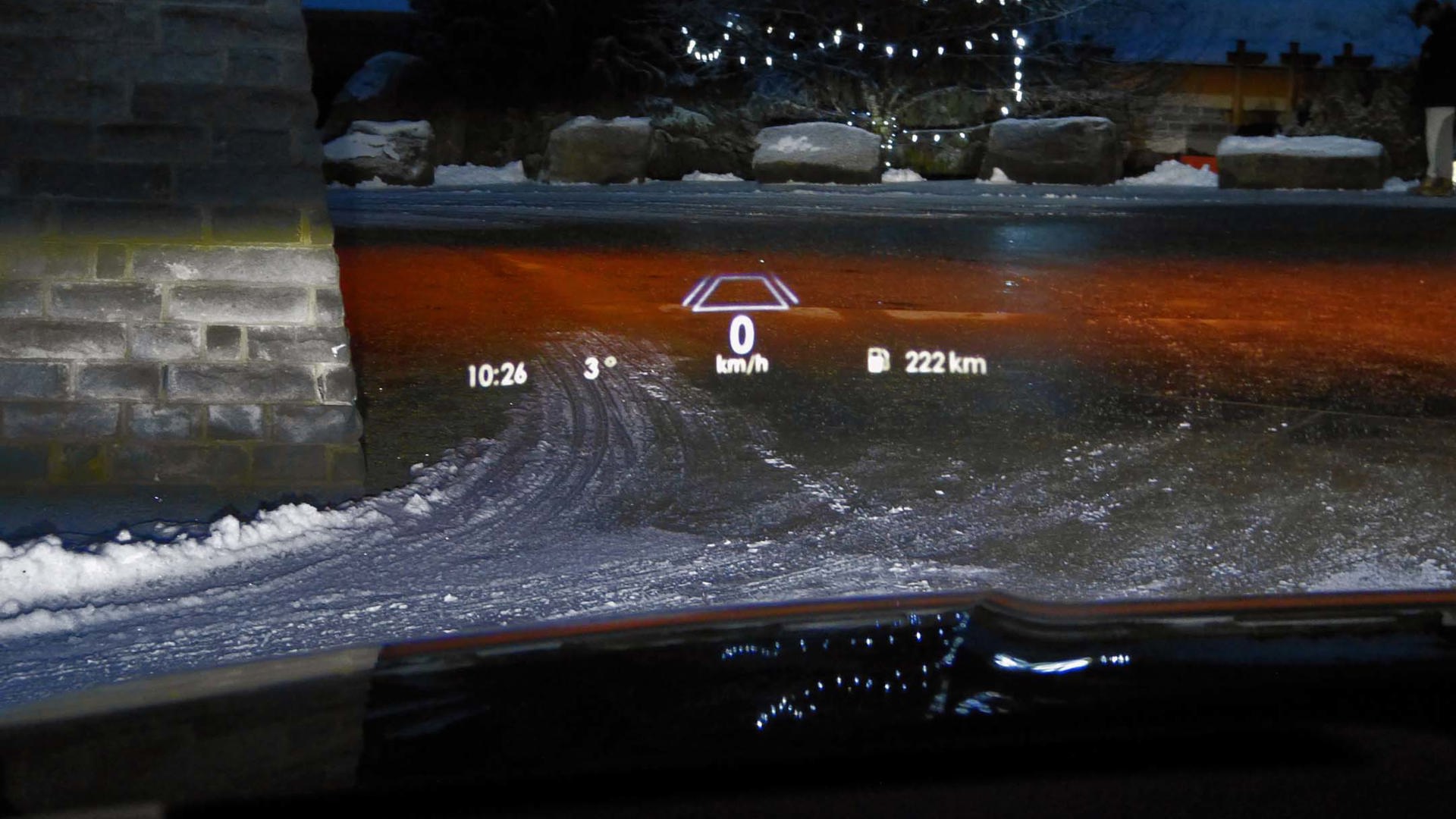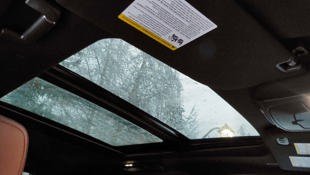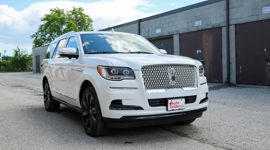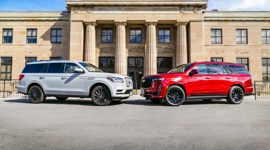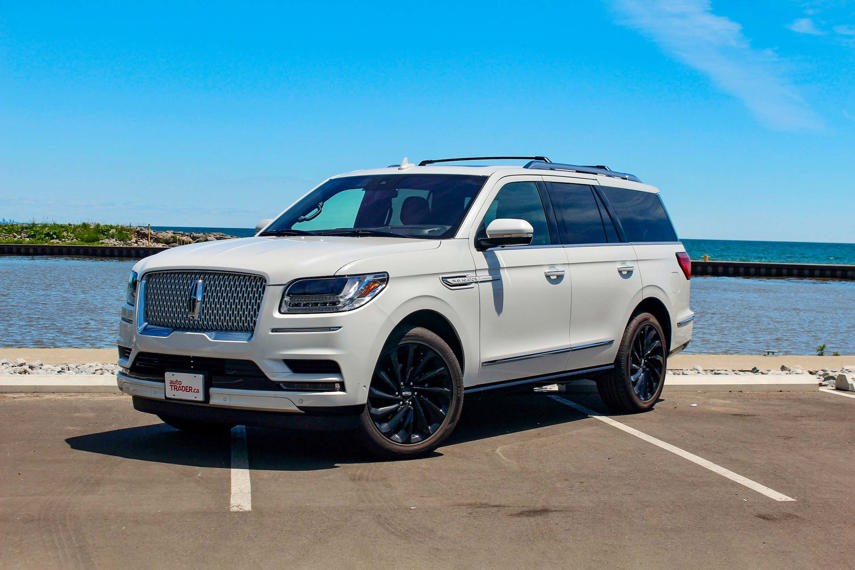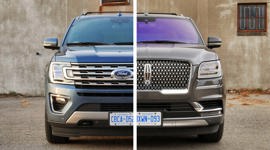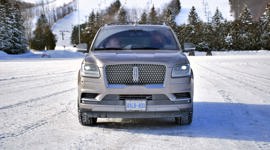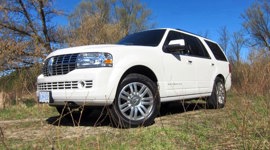“Huh. This actually feels like a $100,000 truck….” My co-driver is right: the 2018 Lincoln Navigator does what the previous generation didn’t – it feels like a $100,000 truck. The interior is striking. The seats are space-age, visually and functionally. The instrument cluster graphics put the movie Avatar to shame. Lincoln has in the Navigator a worthy flagship, an SUV that separates the luxury brand from its Ford roots, and elevates it.
Whoever tuned the exhaust system on this rig deserves a promotion. The note is bang on – tough and growly.
All of which, frankly, is the exact opposite of what I came to Whistler expecting to write. If this rig is in your budget, it’s worth the extra over the Expedition, and that’s saying a lot. Especially when this Navigator starts at $87,650 for the Navigator Select short-wheelbase and tops out at $93,650 for the Navigator L Reserve.
The base-model Expedition for comparison sake is $59,999, and tops out at $83,999 for the top-trim Platinum Max (long wheelbase).
But it’s not as nice, not by a long shot.
Creative, Comfortable, Cavernous
On the outside, the new Navigator looks cleaner, more refined, and simply better. The previous-generation grille is gone, and along with it the awkward divisions in the mesh. The new Lincoln design is elegantly imposing.
But it’s inside where the new Navigator shines brightest. The swathes of wood, the swooping indent sculpted into the dash, and even the way the 10-inch centre-stack screen rises out of the dash are all captivating. The pièce de résistance is the instrument cluster. It’s fully digital, and has the richest graphics I’ve ever seen, on any car.
The speedo, for example, is a sweeping needle that rises with speed; there’s no pre-set display, it just climbs into the darkness. Speed brings light. There’s something for all of us in that, I reckon!
Changing the drive modes brings up a ball of light with the drive mode name and a brief description of what’s it’s supposed to be, and it looks gorgeous. Unfortunately the drive modes don’t make a substantial difference – despite the altered adaptive damper settings and drivetrain response. More unfortunately, that sweeping speedo needle is only in Normal mode – so I just left it in normal, because it was the prettiest mode. I don’t think I’ll be alone in that one.
The seats look like something out of science fiction. The cushions are separate from the base, and alterable in a plethora of ways. Once settled in and adjusted to suit my own rotund chassis, the seats were sublime. Better yet, the seat heaters got hot, fast. Proper hot. Even better again: the massaging function available on both front seats is firm, adjustable, and effective. In a world where most massage seats are more novelty than anything else, purely because they’re too soft to do anything, Lincoln has delivered a masterclass.
There’s both Apple CarPlay and Android Auto connectivity, plus subscription-based Wi-Fi and a wireless phone-charging tray.
For the kids, two entertainment screens adorn the back of the front-row headrests, and rear-seat passengers have access to a 110V power outlet, more USBs than my current laptop, and their own audio and climate controls.
The panoramic sunroof is monstrous, and Lincoln claims it has the best-in-class opening. Regardless, it lets in a lot of light, and the shade is substantial enough to block all that light out again should you suddenly become a vampire. There is no other reason I can think of to ever close the shade.
Even the Sync3 system has had a reskin that makes it seem another level beyond its Ford iterations.
It’s more than the sum of its parts, somehow. The Navigator’s interior is up level exponentially from the Expedition on which it’s based. And for many, that’s enough to justify the extra spend.
Big vs Little
What the Expedition has going for it is a firmer suspension, which makes it feel smaller on the road and a little more agile than the Navigator – it also makes for a narrower gap between wheelbase variants of the Expedition when it comes to ride quality and road manners.
The Navigator still drives smaller than you expect to in short-wheelbase guise, but is a mammoth as a long-wheelbase model in a way the Expedition isn’t.
As a passenger for part of drive up the winding Sea-to-Sky Highway from Vancouver to Whistler, I got more carsick than I have in a long time. The ultra-soft suspension and massive 2,762 kg chassis combined with undulating curves had me a little queasy. The driving character between the short-wheelbase Navigator and long is enough that it should be considered when choosing your model.
That queasy feeling was absent during my stint in the passenger seat of the short Navi. At 2,686 kg it’s not that much lighter than its bigger twin, despite being 3,112 mm long in wheelbase as opposed to 3,343. But it does feel much lighter.
The steering in both models is well-weighted and responsive, with a firm centre and decisive response to inputs. This increases confidence, but it also makes the Navigator that much easier to drive and less taxing. A firm tiller is one thing that can make or break a car. On short-wheelbase models, that steering correlates to a solid and balanced suspension set-up too, but the bigger Navi is too soft.
The brakes in the Navigator have a stepped pressure to them, the first part of the pedal feel is softish, the middle section firmer, and the third ultra-firm, with a quite decisive detent in each phase. On the ice in Whistler, the ABS kicked in much earlier than I expected, but I am occasionally hefty-of-foot. Your mileage may vary.
Engine, O Engine
All Navigators get Ford’s 450 hp, 510 lb-ft 3.5L twin-turbo V6, frankly one of the best engines going right now. Period. And whoever tuned the exhaust system on this rig deserves a promotion. The note is bang on – it sounds tough and growly. More so I think than any other iteration of this engine.
The 10-speed transmission shuttles all of that grunt to all four wheels in a resplendent surge of momentum that disguises the Navigator’s bulk and frightens pedestrians. I also found that on a (closed, private) snowy road, 100 percent of that power can be sent rearward. Because U-turn. Incidentally there is no traction control button on the Navigator. As with many Ford/Lincoln products, it’s only available through the menus. I found this out while looking for the setting for the power running boards – honest.
This engine is a brute, well-suited to a massive luxury hauler. It is as smooth and linear as a big V8 would be, and that’s a massive compliment. Up ’til now, my best argument for a big naturally aspirated eight was that it was more effortless, more smooth, and had better engine note. Lincoln has dented that line of debate mightily here.
Space Crusaders
We mentioned the wheelbase difference earlier, but the L is 302 mm longer than the shorty, not 231. So it’s not just the wheelbase that expands – the rear overhang is slightly longer too. And all the extra length is found behind the third row, in the cargo area.
Opting for the bigger Navigator nets you 3,407 L behind the first row of seats, 2,254 behind the second row, and 1,019 L behind the third row. That’s 479 L, 626 L and 427 L more than the same measurements of the shorter wheelbase at 2,928/1,628/592 L.
If your reason for buying the three-row is you have a big family, but don’t often need to cart their stuff around, the shorter Navigator is the better option. It’s equally as comfortable in legroom and other measurements, and more comfortable for passengers in terms of ride character. Then again, you can fit all the hockey equipment in the back of the LWB.
No matter what trim you get, all three rows have incredible amounts of legroom and space, so you can easily get seven adults into a Navigator with zero issues. The third row has more room than any third row I can remember being in recently. It’s cavernous.
Money, Money, Money
How much stuff do you think you should get on a $100,000 SUV? Because you get a fair bit for the base $87,650 Select trim, but then there are some curious choices for options, even on the top-tier Reserve. For example, the Heavy Duty tow package – which expands the towing capacity from 6,200 lb to 8,300 (6,600/8,100 LWB) – is a $2,000 option on all trims.
The $3,000 Tech package is the only way to get lane-keeping, pre-collision assist with pedestrian detection, and adaptive cruise control with stop-and-go. It also adds the detailed and vivid head-up display, auto high-beam, and active park assist.
But the blind-spot monitoring, forward sensing system, and the power-retracting running boards are all standard on the base Select trim. You also get 22-inch wheels, full LED lighting, foot-activated power liftgate, panoramic sunroof, welcome lighting, interior illumination, remote start, 360-degree camera, wireless charging, Wi-Fi, Sync 3, active noise control, and heated first- and second-row seats.
Not to mention Trailer Sway control and Smart Trailer tow connector, plus adaptive suspension and drive modes.
Moving up to the Reserve trim adds illuminated running boards, second-row console with audio and climate controls, 20-speaker Revel upgraded audio, and two more fast-charging USBs in the second row.
That makes the best option, for my mind, the short-wheelbase Reserve with Technology package, a total of $92,650 before taxes. But my mind doesn’t take into account the luxury buyer. And if you’re going to spend $90,000 on a car, why not tick all the boxes and get it to just on $100K? Some of the standalone options are yet to be priced, but that’s about the highest mark for a short-wheelbase Navigator. Long-wheelbase units, we’re told, will top out at $103,000 with all boxes ticked.
But if you are buying a Navigator, and you don’t need to carry a lot of cargo, get the short wheelbase. Your children will thank you.
Pricing: 2018 Lincoln Navigator
Navigator Select: $87,650
Navigator Reserve: $90,650
Navigator L Select: $90,650
Navigator L Reserve: $93,650
Freight and PDI: $2,000
